side hustle
description: an additional job that a person takes in addition to their primary job in order to supplement their income
99 results
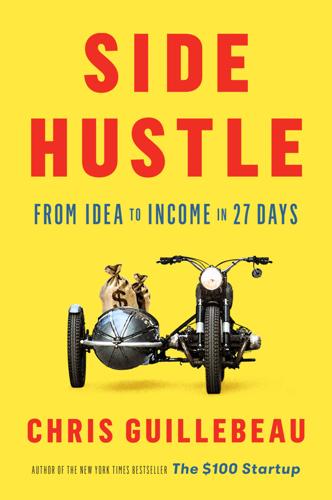
Side Hustle: From Idea to Income in 27 Days
by
Chris Guillebeau
Published 18 Sep 2017
FORECAST YOUR PROFIT ON THE BACK OF A NAPKIN To estimate the profit of your side hustle, you don’t need a finance degree or a scientific calculator. You just need a napkin, a pen, and the power of observation. WEEK 2: SELECT YOUR BEST IDEA Once you have multiple ideas, you need to be able to identify the best ones. Learn how to instantly rank and compare ideas so that you’ll have confidence to proceed with the highest possible odds of success. DAY 6. USE THE SIDE HUSTLE SELECTOR TO COMPARE IDEAS Once you start thinking about side hustles, the ideas don’t stop. This tool will show you how to apply “Tinder for Hustling” logic to pick the best one at any given time.
…
And since you’re the one making the decisions, it can also be fun—only unlike other things you do for fun, this form of entertainment actually brings you more money every month. Remember, a side hustle is the new job security. There’s no downside, and the possibilities are unlimited. Now let’s turn this idea into your reality. WEEK 1 BUILD AN ARSENAL OF IDEAS A side hustle has many benefits, but it all starts with an idea. This first week of hustling will teach you how to generate business ideas that actually work. DAY 1 Predict the Future A side hustle has many benefits and no downside. It all starts with your answer to an important question: Twenty-seven days from now, what will be different about your life?
…
It all starts with your answer to an important question: Twenty-seven days from now, what will be different about your life? Before we get to work, let’s get one thing straight. A side hustle isn’t just about money in the bank, as helpful as that can be. A side hustle really can change your life. When you build something for yourself, even as you continue to work your day job, you become empowered. You gain confidence. You create security, both in the form of that extra cash and also in the fact that you’re opening up future opportunities for yourself. So right from the beginning of this journey, start thinking about your future. Assume that this side hustle thing will work out. What would that mean for you? What will be different about your life?
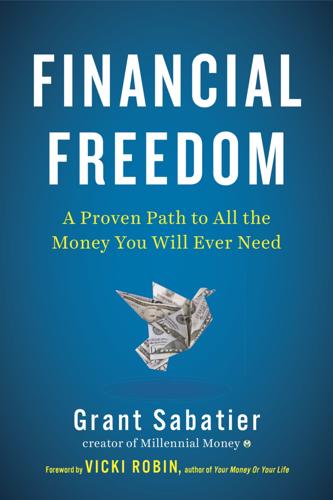
Financial Freedom: A Proven Path to All the Money You Will Ever Need
by
Grant Sabatier
Published 5 Feb 2019
At least 40 percent of my own net worth has come from investing the money I made side hustling. In fact, it would have taken me at least twice as long to reach financial independence without side hustling. While we will dive deep into side hustling later in the book, to find a great profitable side hustle, make a list of all the skills you have or things you are good at and a list of the things you love to do. Which ones overlap? Evaluate those opportunities first. If you like your side hustles, you will be more likely to stick with them and perhaps even grow them so they become more lucrative. Your side hustle can literally be anything, as long as you make money doing it, and once again thanks to the internet, there are more ways to make money than ever before.
…
I’ll also show you how to maximize your benefits, including the best remote-work options possible; increase your skills; find a higher-paying job; and maximize the opportunities to use your nine-to-five to reach financial freedom as quickly as possible. Step 6: Start a profitable side hustle and diversify your income streams. It’s never been easier to start a profitable side hustle and make extra money, but the problem is, most people don’t do it right. They spend their time side hustling for someone else instead of for themselves, which means they aren’t earning as much money as possible. Or they spend their time trying to grow a side hustle that was doomed from the beginning. I’ll show you how to pick, launch, and grow a profitable side hustle so you can make more money in less time and create the moneymaker’s holy grail—passive income streams that make enough money to cover your living expenses and then some!
…
Perhaps these gigs aren’t dream jobs and maybe they don’t have much growth potential, but money is money, right? It’s crazy to me how many people stop side hustling in this way once they get a full-time job. Side hustling—what I define as any way you make money outside of your full-time job—is a relatively simple way to become an entrepreneur and diversify your income streams without taking the risk of leaving your full-time job. You can also start a side hustle with very little time and money, so the learning opportunities are high, but the financial risk is low. If one of your side hustles doesn’t work out, you can try another. The more side hustles you have, the more money you can make, and if you’re already earning a full salary from your main job, you can invest 100 percent of your side income, which will automatically increase your savings rate.
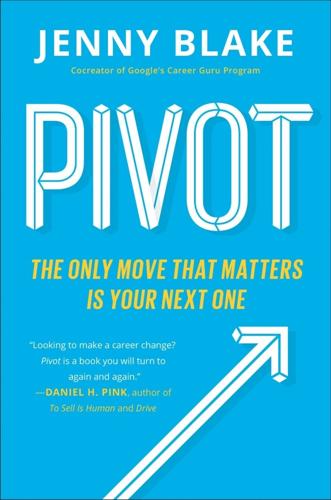
Pivot: The Only Move That Matters Is Your Next One
by
Jenny Blake
Published 14 Jul 2016
The honey hole is the secret spot he can return to that is likely to yield a great catch. The best side hustles are your equivalent of a honey hole: you enjoy them, you are excited to return, you have discovered something unique to you, and they provide value in return. There are four criteria to developing a strong side hustle: 1. Cash (flow) cow: If it does not create income, either now or in the future, your beloved side hustle is a hobby. The best side hustles will demonstrate a monetary return on your investment, if not now, then at some point in the not-too-distant future. How long are you willing to wait? I suggest experimenting with a side hustle that allows you to test revenue generation fairly quickly.
…
If you love teaching underwater basket weaving, but there is no one interested in learning it, you will be quickly catapulted back into unprofitable hobby territory. Look for side hustles with a sizable market to serve, yet not so broad or undifferentiated that you have difficulty resonating with ideal clients. 3. Enjoyment: A side hustle doing grunt work is valuable if it helps you pay the bills or save up for the next big trip you want to take. But a side hustle with even better potential is one that emphasizes your strengths and makes you excited to work on it, whether you have fifteen minutes to spend that day or five hours. 4. Skill building: Ideally, your side hustle will also help you learn or improve skills that may be needed in your field in the coming years.
…
“So you can breathe” income: hourly wage, possibly projects below your skill level Mid-level: monthly retainer, steady cash flow, part-time work Big bets: high income potential; big contracts, clients, or job offers; income sources with longer lead times but greater reward Side hustle: This term refers to modern-day moonlighting, earning income on the side while maintaining a full-time job. This is often not sustainable indefinitely, though some people will be perfectly happy with a light side hustle, like making and selling jewelry or doing freelance design work for friends, that brings them joy without having to quit their job. Even entrepreneurs can have side hustles, or creative sandboxes to play in outside of their main revenue-generating activities. My mom’s advice for me growing up was, “You should always know how to support yourself.”
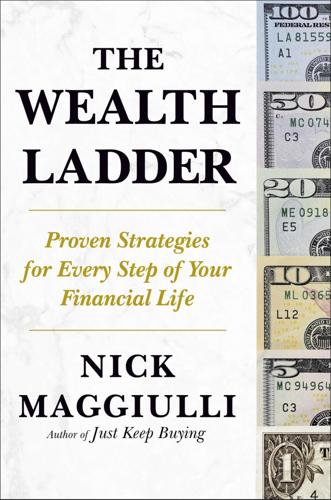
The Wealth Ladder: Proven Strategies for Every Step of Your Financial Life
by
Nick Maggiulli
Published 22 Jul 2025
But investing isn’t the only way to get to Level 4 on the Wealth Ladder. You can also get there by starting a successful side hustle. A side hustle is a business venture that you do in addition to your primary job to earn extra money. Side hustles can be as simple as pet sitting or doing freelance work (e.g., consulting, design, etc.). They could also be as complex as creating physical products or launching an online business. The possibilities are truly endless, and there is no limit to how much you could earn from a side hustle. To prove my point, let me tell you about two of the most unique side hustles I’ve ever heard of. The first involves the William Preston Lane Jr.
…
He makes good side money doing it too. The best thing about a side hustle is that it can typically be done on nights and weekends, when it won’t interfere with your day job. And if you have no plans to replace your day job, the extra cash generated by your side hustle can help you build wealth more quickly. Whether you are investing or doing a side hustle, the key is to generate more income streams. Most people have just one income stream—their job. If they lose that single source of income, they’re in trouble. By investing and pursuing a side hustle, you diversify your income streams and reduce risk in your financial life.
…
Level 3 ($100k–$1M) is where career advancements, side hustles, and your individual investments can make a bigger difference in your income. At this stage, every decision you make should eventually add $1,000–$10,000 to your wealth. If you get a promotion or start a legitimate side hustle, you should see a jump in pay of around this size. As a result, you should be able to save even more money. For example, a great Level 1 to Level 2 strategy is tutoring to make extra income. However, to make this into a Level 3 strategy, you would need to expand it into a full-on side hustle. Advertising your services or hiring more tutors to work under your direction could make this happen.
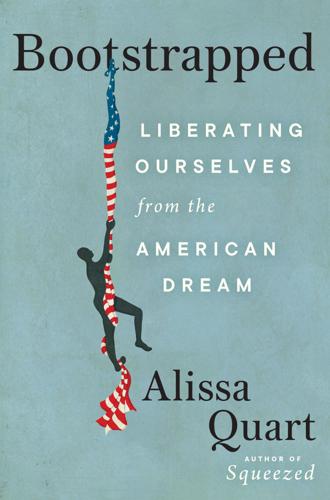
Bootstrapped: Liberating Ourselves From the American Dream
by
Alissa Quart
Published 14 Mar 2023
The urban legends of side hustling at its worst included one Lyft driver who continued to pick up riders after she went into labor, then Lyft-ed herself to the hospital to give birth, and T-shirts with the slogan “9 TO 5 IS FOR THE WEAK.” It was in a set of risible “hustle culture” memes extolling the “grindset.” One maxim: “You can’t make excuses and money. Which is it going to be?” Commercial websites like Side Hustle Nation also were part of it: as Nick Loper, the site’s chief side hustler, exhorted, “My escape route was a side hustle business I built in my spare time—and you can do it too.” The site Medium had a whole Side Hustle Club, with the motto “Where the outcome is income.” This “grind” vocabulary for work can even be heard in a new rendition of that famous song by working-class patron saint Dolly Parton, where she twanged in praise of working on the side and in the off hours: “Workin’ five to nine . . . a whole new way to make a livin’ / Gonna change your life,” all in the service of an ad for Squarespace, a Web-hosting platform, “Be your own boss and climb your own ladder.”
…
Once called drably “another job,” these more chic words gave instability—that fewer than half of American adults, just 47 percent, say that they have enough emergency funds to cover three months of expenses, according to a survey conducted in 2020 by the Pew Research Center—a shiny gloss. The con of the side hustle happened when an NFL coach admiringly remarked that doing your job right means waking up at 3 a.m. with “a knot in your stomach, a rash on your skin, are losing sleep, and losing touch with your wife and kids.” It was in the exhortations of former SoulCycle CEO Melanie Whelan, who pushed “hustle culture” to one and all. “Hustle opens the doors of opportunity,” Whelan once said, encouraging her followers to work long days with the exhortation to “rise and grind.” The urban legends of side hustling at its worst included one Lyft driver who continued to pick up riders after she went into labor, then Lyft-ed herself to the hospital to give birth, and T-shirts with the slogan “9 TO 5 IS FOR THE WEAK.”
…
“There is a part of me that still feels I did something wrong.” In addition to side hustling’s secret and melancholic instability, scholar Tressie McMillan Cottom observes, hustling can serve as a “kind of racial theater.” American culture “applauds the hustler” for “striking out on her own,” even though she may be doing so because she is excluded from traditional and secure employment due to bias. Digital platforms and companies “celebrate grit and urge us to ‘respect the hustle,’” she writes, but this glorification covered over the fact that it’s usually the already privileged whose side hustles add up to more than the sum of their parts.
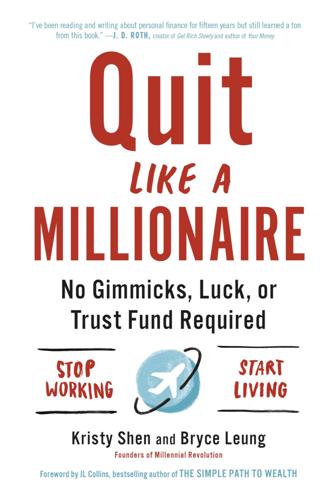
Quit Like a Millionaire: No Gimmicks, Luck, or Trust Fund Required
by
Kristy Shen
and
Bryce Leung
Published 8 Jul 2019
For example, if you’ve always dreamed of becoming a writer but couldn’t support yourself on a writer’s salary (which is pretty common), by making $20,000 per year as a freelance writer, you’ve reduced your required portfolio size by $20,000 × 25 = $500,000. This is what we like to call SideFIRE. By having a side hustle in “retirement,” you don’t have to become fully FI before reaping most of the benefits. You can build the life of your dreams using the power of a side hustle and have your portfolio supplement your living expenses. In the example I just gave, your portfolio would cover half of your $40,000-per-year expenses and your side-hustle income would cover the other half. By developing a side hustle while you’re working, you essentially kill three birds with one stone: you increase your savings rate by making more money, develop a new skill, and reduce the size of the portfolio needed to escape your nine-to-five.
…
You don’t have kids! We’ll cover the topic of retiring early with kids in chapter 19.) Backup Plan #4: The Side Hustle Cost cutting and geographic arbitrage are great tools, but if you want to stay where you are without changing your lifestyle, you have another option: a side hustle! I know, I know; another finance book advising you to “start a business!” as if it’s just that easy. I tried it myself, and I failed—multiple times! The big difference with starting a side hustle after you’ve retired is that your bar for success is much lower. If you quit your job to crochet hoodies for cats and only make $5,000 in a year, you’d consider that an abject failure.
…
According to the 4 Percent Rule, that means you can decrease the portfolio you need to escape from your job by a whopping $125,000. Think about how much time it would take for you to save that much money. This is why side hustles, by themselves, are not super useful for your financial freedom, but coupled with a portfolio spinning off passive income, they can make all the difference in the world. And if your side hustle has to do with your passion, it’s a triple win, because it decreases the size of the portfolio you need, lets you follow that passion, and generates additional income. You don’t need a million to break free.
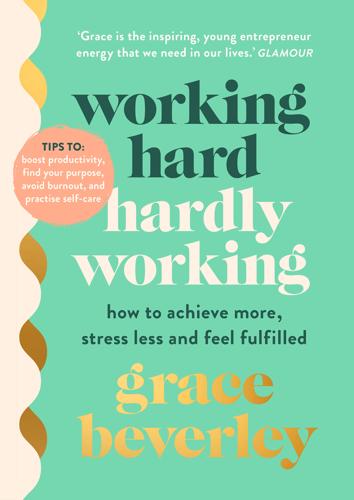
Working Hard, Hardly Working
by
Grace Beverley
We have a sort of paradox of choice – the ability to monetise each and every hobby we might employ, and yet the insistence that if we aren’t earning stripes, we’re cutting corners. In his 2019 article,8 ‘The Toxic Fantasy of the Side Hustle’, Alex Collinson asks when we started saying ‘side-hustle’, rather than just ‘second job’. The article was part of a slew of online examinations following Henley Business School’s 2018 study on the side-hustle economy, and I think that the notion of it being a ‘toxic fantasy’ is pretty bang on. It’s not that the impression of having a side-hustle is necessarily misleading, and it’s certainly not wrong by any means, but the fantasy of it is misplaced. The side-hustle feeds off the idea that we all have an unlimited potential for earning money, restricted only by our time and what we choose to do with it.
…
Could be getting paid for it. Donating clothes to charity? Should’ve flogged them on eBay. On your phone? You could be making thousands in stocks and shares as a #forex #trader. I’ll be the first to put my hand up and say that I have started my career through side-hustles, and they’ve brought me great rewards. There’s nothing wrong with having a side-hustle – it would be hypocritical of me to say otherwise – but there are significant questions to be asked about the impact of it as a culture. It’s become an illustrious dream that turns any second you’re not earning money into an anxiety, and the mental effects of that are draining.
…
Generally, we no longer think it’s necessary to sit through fifteen years of corporate work in order to know the field and move up the rankings, paying respect to the culture in return for a pension we’re not even guaranteed to receive. We’d rather better our chances by trying our own luck, spurred on by side-hustle culture. We refuse to be put in a box, but suffer from the lack of boundaries that comes from moving beyond those walls of traditional benchmarks. As a generation, we’ve grown up without definitive borders between work and ‘not-work’. Technology allows us constant access to our working lives, which has slowly but surely developed into an anxiety that not working anywhere and everywhere is the equivalent of being in the office and having a nap.
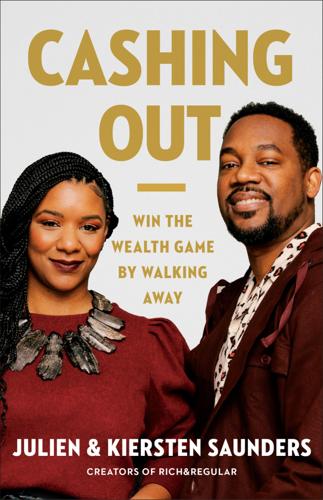
Cashing Out: Win the Wealth Game by Walking Away
by
Julien Saunders
and
Kiersten Saunders
Published 13 Jun 2022
It wasn’t a life-changing amount of money, but it was a welcome trickle of cash flow in addition to the income from her new job. Over the years, Jannese would continue to learn about affiliate marketing and apply the lessons to her blog and other side hustles. In 2020, she launched the Yo Quiero Dinero podcast, offered financial coaching and side-hustle coaching, launched an online course, and was a freelance writer, all in addition to her day job. And the results were nothing short of impressive. On top of the salary from her primary job, she earned an additional $100,000, which she used to pay off her student loans, crush her credit card debt, and boost her saving rate.
…
[apparently] she got it from me.” She certainly had gotten it from her: unknowingly, her mother’s advice had been the very thing that sparked her desire for financial independence! Purple is the purest example of cashing out we’ve ever heard. While she didn’t take the entrepreneurial, real estate, or side-hustle route, she doubled down on her relentless discipline. Instead of finding or developing the next big idea, she simply poured all of her extra time into minimizing her spending. She was also willing to break social norms and common career advice by routinely job-hopping and effectively used that tactic to grow her income significantly over a focused period of time.
…
But considering she had $39,000 of student loan debt, $10,000 of credit card debt, and a $439,000 mortgage hanging over her head, she sucked it up—until she was suddenly laid off. Though the initial news came as a shock, she rebounded, choosing to see her predicament as an opportunity and not a death sentence. Having been inspired by FIRE podcasts and blogs, she’d already begun to explore the world of side hustling online and saw this as an opportunity to turn up the heat. Jannese is passionate about cooking and noticed there was a gap in blogs that featured Puerto Rican and Latin cuisine. So after taking a food-blogging course, devouring YouTube videos, and learning about search engine optimization, she launched her first blog, Delish D’Lites.
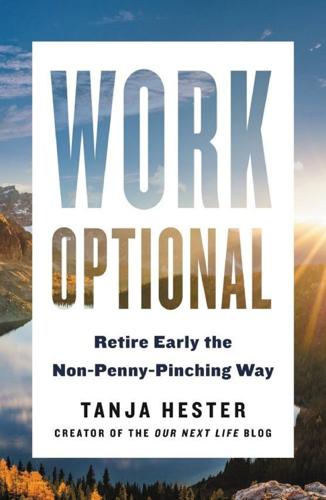
Work Optional: Retire Early the Non-Penny-Pinching Way
by
Tanja Hester
Published 12 Feb 2019
As we saw in chapter 7, earning more and banking your increased earnings in your investments is the absolute best way to increase how much you can invest year over year. There are several big ways you can increase your income: by starting a lucrative side hustle, by retraining for a higher-paying career, by increasing your focus in your current career, by negotiating for more money, or by going to work for yourself. Work a Side Hustle Side hustles have grown more common in recent years as younger people especially find them necessary to make ends meet with their student loan debt burdens and high rents in big cities. But side hustles can work for anyone who wants to earn more, assuming you choose one that’s truly lucrative. Quite a few multilevel marketing schemes out there prey on folks who are eager to make a little extra on the side, and they often result in those people losing money.
…
For 10 years, I taught yoga and spin classes as my side hustle. The startup costs were minimal—a few hundred dollars for my basic certification—and there were almost no ongoing costs. Though I didn’t always love having to get up at five a.m. to teach classes, the pay rate was good, and the bonus was that I got paid to work out. Teaching yoga at studios is not always profitable, as there are high costs associated with traditional teacher training, and studios don’t all pay fairly, but teaching regular fitness classes at the gym can be a great side hustle. In general, part-time jobs on top of your full-time job start providing income the fastest, though the income itself may not be huge.
…
I’d often be rushing to get off a late call and then sprinting to class. It didn’t feel good to bluster into class like that, and I knew it wasn’t sustainable anymore. So as hard as it was to close that chapter, I realized that giving up my side hustle would allow me to increase my focus and effort at work, which set me up for a promotion, higher pay, and increased opportunities. Around the same time, Mark decided to increase his focus at work, too. Though he never had a side hustle and had always produced high-quality work that made him beloved by clients and colleagues alike, he’d never really committed to drumming up new business. It was his least favorite part of the job, and he’d always felt uncomfortable stepping into the salesperson role.
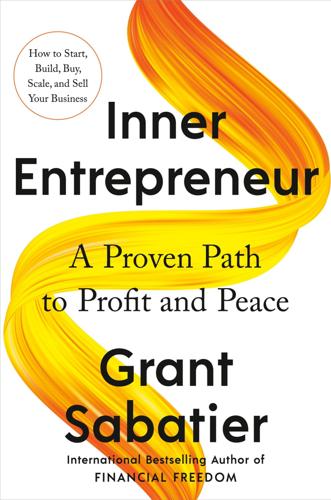
Inner Entrepreneur: A Proven Path to Profit and Peace
by
Grant Sabatier
Published 10 Mar 2025
They offer infinite scalability and flexibility. Unlike physical products, which require manufacturing, shipping, and storage, digital products can be instantly accessed and downloaded with just a few clicks. Back in the day, it was easy for me to sell my side-hustle e-book for $9.99 and then use the e-book to sell my side-hustle starter course for $49 and membership to my side-hustle community for $49 a month, all from my email list. Then, I was able to sell $500-per-hour coaching calls, followed by a $397 course. But it all started by giving away a ton of value for free and selling small products first. While selling digital products has become more challenging over the past few years due to increased competition and more discerning consumers, it’s the easiest and best place for a digital entrepreneur to start if you have a great niche audience, product, and unique perspective.
…
I already mentioned Helium 10 (for Amazon), but there’s also Jungle Scout (for Amazon), EtsyHunt (for Etsy), GummySearch (for Reddit), and many other tools you can use to see what consumers are searching for and talking about on each platform, what they’re buying, and how much sellers are selling of anything on the platform. When I started writing about side hustles in 2015, there were only a few thousand searches of that term per month. Today, there are hundreds of thousands. While there was no way I could have predicted such a meteoric rise in the interest of “side hustles,” I was confident that more people would be interested in diversifying their income streams using all the new ways to make money online. It’s worth mentioning that even if a market isn’t growing, and sometimes even if it’s in decline, there could still be incredible opportunities to make money if there’s enough volume.
…
I share everything I’ve learned in my fifteen years as an entrepreneur that has had the biggest impact on my entrepreneurial journey—what’s made me the most money and what’s brought me the most peace. There are no lofty theories in this book. Everything I’m about to encourage you to do is something I’ve done or am currently doing. These strategies apply whether you’re just starting to build a side hustle, working part-time as an entrepreneur, or running multiple businesses simultaneously. It’s never easy to start or grow a business, but there are many things you can do to give yourself an advantage. This book is carefully designed to increase your chances of success I’ve designed the book to save you time by focusing on the strategies, tactics, and metrics that will increase your chances of success and reduce your risk of failure.

Early Retirement Guide: 40 is the new 65
by
Manish Thakur
Published 20 Dec 2015
When finishing a long day at work, it's hard to get the motivation to keep working, so it is better to find a hobby or skill you would look forward to working on. The increase in income your side hustle creates varies from each person and idea, but follows closely with how much effort has been put into it. Focus on hustles that take little to no money to start, but can be grown over time, so that if it doesn't pan out or a big change needs to occur, there isn't a large impact to your finances. Providing consulting services from knowledge earned on the job is a great way to start quickly with a low cost, and has a lot of potential to grow over the years. It will take some time to get a steady income from your side hustle, so stay committed and you're bound to see the fruits of your labor. 3.
…
If it's been a while since your last raise, a simple question might be the only thing stopping it. The worst that could happen is your boss says no. It's important to convince yourself why you need a raise first before trying to convince your boss, and truly believe you deserve one. 2. Work on a side hustle. I don't mean go on the street and do the "find the ball under the cup" kind of hustle, but putting in some extra work on the side outside of your job. It could be anything from restoring free craigslist items and reselling them, refereeing little league games, running a niche website, to consulting companies using experience built up over years on the job.
…
It will take some time to get a steady income from your side hustle, so stay committed and you're bound to see the fruits of your labor. 3. Work as a freelancer. Freelancing gives a lot of flexibility and freedom, without the pitfalls of needing to go to an office or keep regular hours. Freelancing while paying off debt or looking for some seed money to start your side hustle helps jumpstart both of these by providing some extra money easily. Keep in mind that we are working towards independence and an ideal life. Pursue ideas that interest you and will make you happy. Challenges: 1. Outline possible reasons why you should get a raise and back them up with recent examples 2. Write down your passions and business ideas and narrow them down to your three favorite.
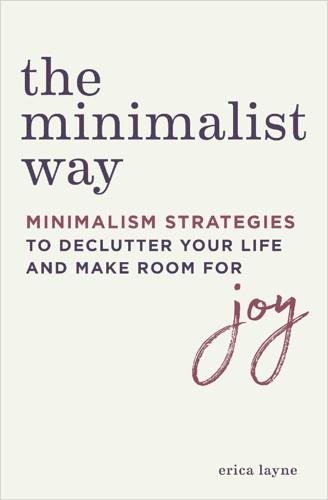
The Minimalist Way
by
Erica Layne
Published 25 Feb 2019
Maybe you’ve been wanting to revamp your resume, figure out your family holiday card, or make a photo album. For the sake of this example, let’s imagine that you have a side hustle—a passion project you work on in the fringe hours of your life. Now notice the difference between these two mind-sets: I’m sitting down to work on my business. I’m sitting down to produce for my business. You could work endlessly on your side hustle, popping from one thing to the next. A half-written blog post here, a social media post there. But what if you sat down to produce something for your side hustle? If you gave yourself two hours, could you record a podcast episode, write a chapter of your e-book, or schedule your social media shares for an entire month?
…
A true minimalist knows that no one can do it all; he’s given himself permission to prioritize the most important work and to let less important tasks fall as they will. Use the following strategies to help you prioritize your work and bring more focus to your most important tasks. And if your work happens to be more utilitarian at the moment, please feel free to apply any of these strategies to a project, side hustle, or hobby outside of your workplace. 1. ASK YOURSELF WHAT ONLY YOU CAN DO It may take years of studying yourself to be able to answer this question, but I believe we all have a set of gifts that are uniquely our own—and that we magnify our impact on the world when we discover and use those gifts.
…
I’m not saying you have to suddenly quit your job and start traveling the country in a van (although if that’s where your heart is leading you, then by all means, go for it!). But you can make small shifts toward the work/life balance you envision, from taking a class, to putting more energy into your side hustle, to blocking out time to travel, to simply spending more quality time at home—starting today. 5 family life At 11 years old, my oldest son has lost all of his baby chub; he’s traded it in for visible ribs and lengthening arms and legs. Recently, I sat in a camp chair facing the ocean, and he stepped in front of me to tell me something.

Laziness Does Not Exist
by
Devon Price
Published 5 Jan 2021
After all, full-time jobs with benefits are rapidly becoming a thing of the past.32 The harder it gets to make a conventional, nine-to-five living, the more people have to fill their weekends, evenings, and other spare moments with moneymaking side hustles like these. I know more people like Alex than I could ever possibly name. The gig economy has arrived in full force, and it’s swallowed up the free time and brain space of every driven Millennial artist I know. Ricky drives for Uber in the mornings and evenings when he’s not busy giving singing lessons and performing in choirs. Dio used the app Wag to find work as a dog walker, supplementing the income he made as an ice cream shop manager. I used to edit people’s academic papers for about twenty dollars an hour on Upwork, until I got too busy to fit that side hustle into my life anymore.
…
He knows, more intimately than most of us, that the comfort and security his work has brought him could dry up at any moment. As someone with a prison record, he can’t dive into the workforce with the same ease that many of us can. So even though his schedule is filled with speaking engagements, teaching opportunities, and paid writing gigs, Eric keeps signing up to participate in paid clinical trials and other side hustles. He never says no to a writing or performance opportunity, even if it means traveling in the middle of the night from one city to another. He still fears that if he doesn’t keep pushing himself to the limit, he will descend into laziness and never recover. I’ve talked to dozens and dozens of overworked people, and this fear is one almost all of them share.
…
We see the pressure to overwork in nearly every industry and professional field. Smartphones, laptops, and digital work tools such as e-mail and Slack have made it harder than ever for us to leave our work behind when we go home for the day. And thanks to the rise of the “gig economy,” the pressure to fill even our spare moments with additional labor and “side hustles” has expanded our workloads even more. The Workweek Is Getting Longer The Industrial Revolution brought with it the rise of the industrial, warehouse-based workplace.7 Factory employees were toiling all day long in dangerous, dark conditions, unable to make time for anything in their lives other than sleep.
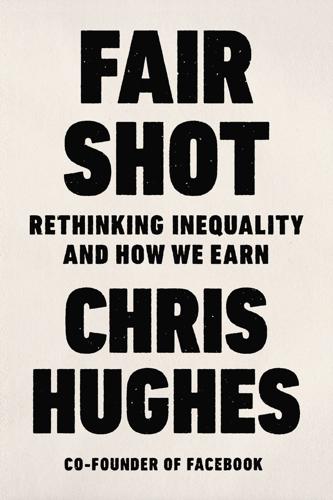
Fair Shot: Rethinking Inequality and How We Earn
by
Chris Hughes
Published 20 Feb 2018
Marketplace, June 9, 2016. https://www.marketplace.org/2016/06/09/economy/does-middle-class-life-cost-more-it-used. Apple Inc. “2017 Supplier List.” Apple Supplier Responsibility Program, February 2017. https://images.apple.com/supplier-responsibility/pdf/Apple-Supplier-List.pdf. Baab-Muguira, Catherine. “Millennials Are Obsessed with Side Hustles Because They’re All We’ve Got.” Quartz, June 23, 2016. https://qz.com/711773/millennials-are-obsessed-with-side-hustles-because-theyre-all-weve-got/. Badel, Alejandro, and Brian Greaney. “Exploring the Link between Drug Use and Job Status in the U.S.” U.S. Federal Reserve Bank of St. Louis, July 2013. https://www.stlouisfed.org/Publications/Regional-Economist/July-2013/Exploring-the-Link-between-Drug-Use-and-Job-Status-in-the-US.
…
TaskRabbiters pitch in to assemble furniture, rake leaves, or even stand in line to buy theater tickets or a newly released iPhone. In some cases, these contract jobs are a godsend because they help workers who only get part-time hours elsewhere to supplement their income, as laborers have done since the beginning of time. We often think of millennials in these jobs, the masters of the art of the “side hustle,” but the numbers show it isn’t just millennials doing contingent work. A quarter of the working-age population in the United States and Europe engage in some type of independently paid gig, some by choice, but many out of necessity. People who find work through apps like Lyft and TaskRabbit get a lot of attention, but they are the tip of the iceberg.
…
See Wartzman, “Populists Want to Bring Back the Blue-Collar Golden Age”; and Oxfam America and Economic Policy Institute, “Few Rewards.” 45 “For workers, the American corporation used to act as a shock absorber”: Wartzman, End of Loyalty, 5. 46 the numbers show it isn’t just millennials doing contingent work: Baab-Muguira, “Millennials Are Obsessed with Side Hustles.” 46 A quarter of the working-age population in the United States and Europe engage in some type of independently paid gig: Manyika et al., “Independent Work.” 46 the number of people working in contingent jobs balloons to over 40 percent of all American workers: Pofeldt, “Shocker: 40% of Workers Now Have ‘Contingent’ Jobs.” 46 of all the jobs created between 2005 and 2015, 94 percent of them were contract or temporary: Katz and Krueger, “Rise and Nature of Alternative Work Arrangements.” 46 Many of these jobs of the new economy pay poorly: Dews, “Charts of the Week”; Vo and Zumbrun, “Just How Good (or Bad) Are All the Jobs Added?”
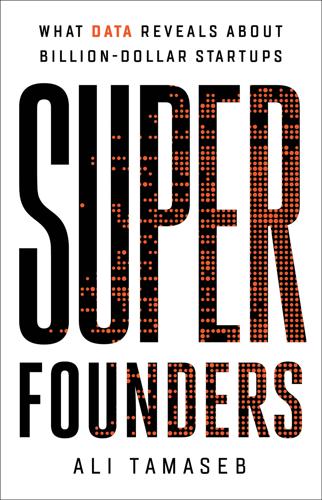
Super Founders: What Data Reveals About Billion-Dollar Startups
by
Ali Tamaseb
Published 14 Sep 2021
My hope is that the insights in this book will be not just eye-opening but also useful and practical on your own entrepreneurial journeys. Some founders may try to conform to certain narratives, build teams in specific ways, or shape their startups to fit stereotypes. Here, we’ll use data to figure out what really matters. You will learn that those who had a bug for building and leading projects or side hustles had a much higher chance of creating a billion-dollar company, and that while having almost ten years of work experience is the average, many of them didn’t know anything about the industry they were about to disrupt—and many never anticipated the level of success they achieved. We will see that creating highly differentiated products is important, but being first to market is not.
…
Those projects weren’t about striking it rich so much as scratching the itch to create. Looking at the data, one can see that the best preparation to start a multibillion-dollar company is to create a $10 million–plus company first. The best preparation for that is to start something—anything: a hobby project, a side hustle, maybe a school club. Some Super Founders had as many as four previous $10 million–plus outcomes. Not everyone who starts a billion-dollar company is a Super Founder. Founders can land on their big idea without much past success, or even with a lot of past failure. The key observation seems to be that these founders have each had a journey.
…
I came from a totalitarian country, so I had this notion of wanting my communications to be private. I don’t want the government reading my email. And so while I was figuring out what I’m going to get a PhD in, I was thinking of crypto. This is before “crypto” meant Bitcoin. This is crypto in the original sense of the word. So in college, I had this side hustle project called the SecurePilot. If you need to log into a really secure corporate network or a campus network, you need a onetime password generator sometimes followed by standard algorithms, but a lot of times they’re actually half-baked yet secret algorithms. And so I realized that around me were all kinds of system administrators that carried around these various little physical password generators.
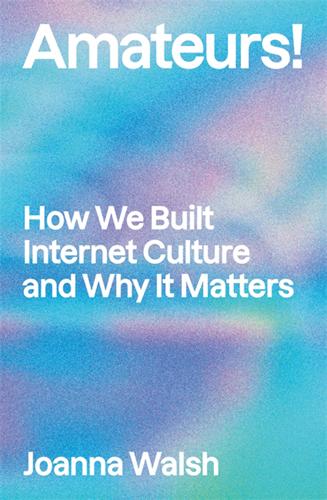
Amateurs!: How We Built Internet Culture and Why It Matters
by
Joanna Walsh
Published 22 Sep 2025
While romanticising the ‘authenticity’ of scenarios that have historically been classed male – sport, mechanical tinkering – Lefebvre doesn’t account for less formally organised or predominantly social aesthetic pursuits (going dancing, shopping), or those that overlap with utility (cooking, knitting). These are not just hobbies that the twentieth century tagged female, but they’re the very side-hustles whose presentation creates value online. Lefebvre’s twentieth-century male worker was able to separate work and leisure via an awareness of his alienation: at the factory or the office, he ‘knows he is not working for himself’.8 But the internet blurs the line between job and side-hustle and – simultaneously – the experience of producing and consuming aesthetics. That this has accompanied the personalisation of jobs (sometimes also labelled feminisation), work’s bleed into leisure time and the rise of the gig economy, is no accident.
…
The 3user-friendliness of online platforms means that creative acts are more casual, less effortful, not always needing the commitment or expertise required by what used to be called a hobby. Do we even know we’re amateurs? Though some online creators are – or consider themselves, or aspire to be – professional or paid, the proliferation of free content online causes confusion as to whether these side-hustles are actual work. It also blurs the lines of professional practice. Even for professionals, online engagement (a social media presence, a Substack, a TikTok) is often performed at an amateur level, untrained and unpaid, not part of the day job. The internet is old now: we have aged together. Online isn’t an unfamiliar experience any more; it’s where we live.
…
On the internet, everyone is required not only to be famous for fifteen minutes but to renew that fame endlessly in competition with all the other famous people in the world, which, online, is everyone. There’s no structure to this competition, and no ultimate prize on offer, though there are plenty to be had. Hobbies have become side-hustles, or forms of aesthetic activism, or social capital-earning demonstrations that we’re living the good life on Instagram or TikTok. Private and work time, like the private and public self, have leaked into each other. Amateurism isn’t what it used to be and hasn’t been for some time. And nowadays, who has time for leisure?
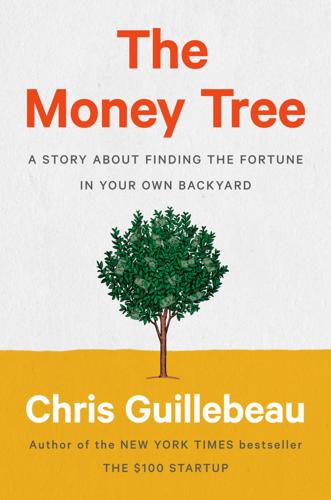
The Money Tree: A Story About Finding the Fortune in Your Own Backyard
by
Chris Guillebeau
Published 6 Apr 2020
They’ll be able to repay you later . . . To the buzz, Chris Guillebeau About the Author Chris Guillebeau is the New York Times bestselling author of The $100 Startup, Side Hustle, The Happiness of Pursuit, and other books. During a lifetime of self-employment that included a four-year commitment as a volunteer executive in West Africa, he visited every country in the world (193 in total) before his 35th birthday. His daily podcast, Side Hustle School, is downloaded more than two million times a month. He is also the founder of the World Domination Summit, an event for cultural creatives that attracts thousands of attendees to Portland, Oregon every summer.
…
Other titles by Chris Guillebeau Side Hustle The Happiness of Pursuit The $100 Startup The Art of Non-Conformity Portfolio / Penguin An imprint of Penguin Random House LLC penguinrandomhouse.com Copyright © 2020 by Chris Guillebeau Penguin supports copyright. Copyright fuels creativity, encourages diverse voices, promotes free speech, and creates a vibrant culture. Thank you for buying an authorized edition of this book and for complying with copyright laws by not reproducing, scanning, or distributing any part of it in any form without permission.
…
Everything we do is based on these simple principles. Get some sleep and I’ll see you at Lava Java bright and early! Best, Clarence The Third Way A Manifesto No one should depend on a single paycheck for their entire income. And now, there’s no good reason why you have to. Whether you call it a side hustle, a small business, or just “something you do for extra money,” you can use this model to create more freedom for yourself. To start, follow these five guiding principles. If you get stuck, come back to them. The answer is probably found in some part of the model.* 1. Everyone’s an expert at something.

Crushing It!: How Great Entrepreneurs Build Their Business and Influence—and How You Can, Too
by
Gary Vaynerchuk
Published 30 Jan 2018
Or post pictures on Instagram of your pet hedgehogs wearing tiny hats. Thanks to the proliferation of platforms and the migration of TV and magazine viewers to the Internet, there is room for many, many more experts and personalities to create a lucrative, sustainable ecosystem that promotes and grows their businesses or even side hustles. It’s a great time to be a fashion model, for example. There was a time when there was room for only a handful of superstars to see themselves featured in editorial fashion spreads and on the runways. Then there were maybe a thousand in the middle getting steady commercial work in print and TV.
…
But she also became known as the person who knew how to edit videos and could help you figure out the privacy settings on your Facebook page, which would not have been remarkable in Silicon Valley but was unusual in Ohio at the time. It was friends living on the West Coast who informed her that social-media management was a real job. And she thought, I could get paid to do this? That’s when the side hustle started. After getting home from her day job, sometimes as late as seven p.m., she’d buckle down to the freelance work. The first small businesses she approached were already overwhelmed by all the content they had to create for Facebook and Twitter, and now here’s this person telling them they had to make videos, too?
…
Decades of testing, experimentation, and life experience led to his and his son’s “overnight success.” Growing up, Dan had always wanted to be an entrepreneur, but upon graduating from college with a young family, he applied his degree in global business and finance to a position as a pharmaceutical sales rep. The money was good, but for years he put up websites and dabbled in side hustles, or, in his words, “little random small businesses that totally failed,” in the hopes that one would take off and allow him to leave his steady job. When YouTube came along, he put up videos of his kids and wife to share with the rest of his family, who didn’t live near him in Utah. He’d always monetized his websites with Google AdSense, throwing up little pop-up ads, and he did the same for the YouTube videos even though he’d never made any money this way.
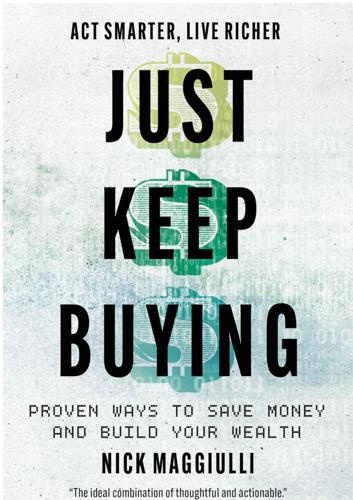
Just Keep Buying: Proven Ways to Save Money and Build Your Wealth
by
Nick Maggiulli
Published 15 May 2022
For example, the control your spending faction might claim that making your coffee at home (instead of buying it at Starbucks) can save you up to $1 million over the course of your lifetime. On the other hand, the raise your income group may argue that it’s far easier to earn extra income through a side hustle than to question your every spending decision. Technically, both sides have valid points. Going back to our equation from the prior chapter, savings is defined as: Savings = Income – Spending Therefore, in order to increase your savings, you either have to increase your income, decrease your spending, or both.
…
Cons: Lots of upfront investment and constant marketing. 5. Climb the Corporate Ladder Of all the ways to grow your income, climbing the corporate ladder is the most common and also the most despised. There is this prevailing attitude that working a 9 to 5 job is somehow less worthy than working for yourself or starting your own business or side hustle. But, if you look at the data, a 9 to 5 is still the way that most people build wealth. In fact, the best chance that many Americans have of becoming a millionaire is through a professional degree (e.g., doctor, lawyer, etc.). As The Millionaire Next Door stated about a group of millionaires studied in the late 1990s: “As a group, [millionaires] are fairly well educated.
…
Max’s argument is quite clear—if you want access to the best angel investments with big, outsized returns, then you have to be deeply embedded in that community.⁷⁴ Research on this topic supports Max’s claim, finding that time spent on due diligence, experience, and participation were all positively correlated with an angel investor’s long-term returns.⁷⁵ How Do You Invest in Small Businesses? You can’t do angel/small business investing as a side hustle and expect big results. While some crowdsourcing platforms allow retail investors to invest in small businesses (with other opportunities for accredited investors), it is highly unlikely they are going to have early access to the next big thing. I don’t say this to discourage you, but to reiterate that the most successful small business investors commit more than just capital to this pursuit.
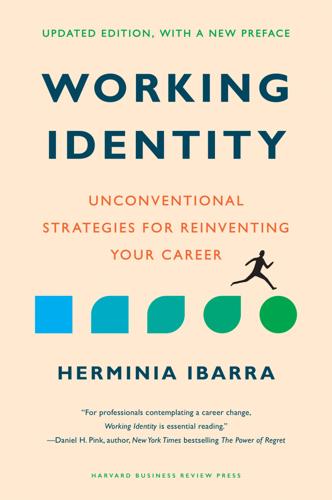
Working Identity, Updated Edition, With a New Preface: Unconventional Strategies for Reinventing Your Career
by
Herminia Ibarra
Published 17 Oct 2023
But the hypothesis was confirmed, and he resigned from the business school at the end of the two-year period. Narrowing the Search Early explorations like Ben’s are smaller, faster, lower-cost investments than full-fledged career changes, cheap ways to gain insight into vaguely defined possibilities. They are projects, part-time ventures, side hustles, temporary assignments, and limited partnerships set up as low-risk ways to diversify a portfolio of options rather than “big bang” investments. With each experiment, priorities become clearer; we progress from open-ended questions to more serious tests. Crafting experiments allows us to move, even if gradually, from exploration to confirmation, the only way to avoid becoming stuck, like many would-be career changers, in the daydreaming stage.
…
As the research kicked into high gear, she gave six months’ notice at the consulting firm, which allowed her to explore her options more fully and at her own, rather than her employer’s, expense. Eventually, the first project beat out the other two as the preferred option. Many of us work on pet projects, side hustles, or outside activities that, over time, take on a life of their own. Often, we start small: joining a nonprofit board, volunteering for a community organization, or finding a local business that needs help in an area that matches your skills. During the Covid-19 pandemic, for example, people made surprising discoveries by working on crisis initiatives and community efforts.
…
A corporate strategist at a Fortune 500 company, he long dreamed of turning his passion for music into work as a record producer.7 But with no track record in the music industry, he would have a hard time getting hired, even as an apprentice. By volunteering, and leveraging his business skills to get a foot in the door, he gained experience in a new industry. Results did not come overnight, but Kabir ended up keeping both careers (as well as a third side hustle as a published author), finding more synergies between them than he suspected at the outset: My day job not only afforded me the capital to make albums, but it taught me the skills to succeed as a producer. A good producer should be someone who knows how to create a vision, recruit personnel, establish a timeline, raise money, and deliver products.
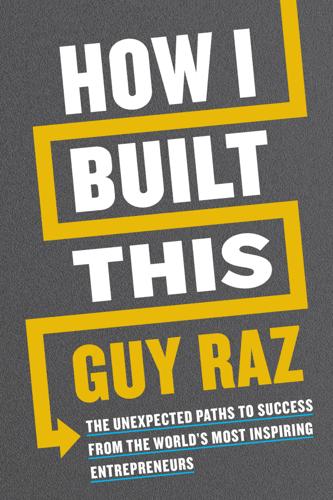
How I Built This: The Unexpected Paths to Success From the World's Most Inspiring Entrepreneurs
by
Guy Raz
Published 14 Sep 2020
Her customers, if they were out there as Carol believed, would benefit from her products in much the same ways. And that is the key to finding an idea, whether you are actively on the hunt for one or simply open to the possibility. No matter what kind of business you are thinking of starting—whether it’s a product or a service, whether it’s your side hustle or your main thing, whether it’s for men or women, kids or adults—the intersection of personal passion and problem solving is where good ideas are born and lasting businesses are built. Trusting her mother’s instincts, Lisa invested $100 in materials, table rental, and flowers for decoration, and then put her items up for sale for the first time.
…
Initially, just as an outdoor events company, popping kettle corn in their garage and selling it outside supermarkets, Little League baseball games, and Minnesota Vikings football games in the freezing Minnesota winter. That they would end up building a business defined by beautifully branded and packaged popcorn that flies off grocery store shelves across North America was as much a shock to them as to anyone, because in the beginning this whole thing was just a side hustle. A psychiatric nurse practitioner and middle school teacher, respectively, Angie and Dan were looking for a way to make a little extra money that they could put away for their children’s college educations. The kids were just three and five years old when their parents started to kick around ideas.
…
“Somehow I stumbled across a site that said, ‘Make thousands of dollars every weekend popping kettle corn,’” Dan said. “I didn’t even know what it was.” His ignorance of the sweet-and-salty treat did little to suppress his appetite for the offer this website presented. For the low, low price of $10,000, a couple in Gig Harbor, Washington, who’d made this their side hustle, would send them a big kettle with all the equipment, a tent, and a table. No recipe. “I remember distinctly the phone call,” Angie said. “I’m in the middle of a patient takedown, and my husband’s on the line. So I run back to the nurses’ station, and he’s on the other end and he says, ‘Ange what do you think about kettle corn?’
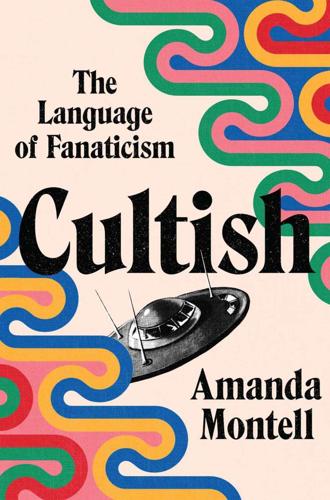
Cultish: The Language of Fanaticism
by
Amanda Montell
Published 14 Jun 2021
But there is always a story. As soon as you get your language back, you can tell it. Part 4 Do You Wanna Be a #BossBabe? i. Roses are red Money is green The American Dream Is a pyramid scheme Hey girl! I LOVE your posts. You have SUCH a fun energy!! Have you ever thought about turning that energy into a side hustle? Let me ask you a question ;) If there were a business where you could work part-time from home but make a full-time living, would that interest you at all? Because that’s what I’ve been up to. Some people are super closed-minded to stuff like this which limits their opportunities, but you seem open to new things, which is exactly what it takes to be successful!!
…
“Clean beauty” MLMs with chicer, updated packaging pivoted to populating their seller bases with “micro-influencers”—women with small blogs and a few thousand social media followers who could be tempted by an unctuous DM about how their feed is amazinggg and would they like to add a second stream of income while becoming part of the clean beauty “movement”?! Pairing deliciously with the glamorous image of a self-employed influencer, this hipper generation of MLMs pitched itself as the perfect side hustle. The nimble direct sales industry always finds a way to reinvent itself—the capitalist cockroach that just won’t stop reincarnating. iii. Hey lady! Just wanted to send a reminder that we’re in the business of changing lives here!! Yes, we’re making money, but it’s so much bigger than that . . . it’s a MOVEMENT.
…
a series of grievous reports: Andy Newman, “The ‘King’ of Shambhala Buddhism Is Undone by Abuse Report,” New York Times, July 11, 2018, https://www.nytimes.com/2018/07/11/nyregion/shambhala-sexual-misconduct.html. Part 4: Do You Wanna Be a #BossBabe? i. “Have you ever thought about turning that energy into a side hustle?”: Eric Worre, “The Hottest Recruiting Scripts in MLM,” Network Marketing Pro, https://networkmarketingpro.com/pdf/the_hottest_recruiting_scripts_in_mlm_by_eric_worre_networkmarketingpro.com.pdf. LuLaRoe: Charisse Jones, “LuLaRoe Was Little More Than a Scam, a Washington State Lawsuit Claims,” USA Today, January 28, 2019, https://www.usatoday.com/story/money/2019/01/28/lularoe-pyramid-scheme-duped-consumers-washington-suit-says/2700412002/.
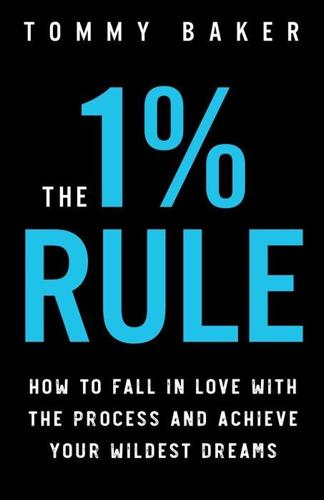
The 1% Rule: How to Fall in Love With the Process and Achieve Your Wildest Dreams
by
Tommy Baker
Published 18 Feb 2018
However, our brains are masters at making the novel routine, and we begin to notice a downtick in enthusiasm. Every day, energy starts to fade. We’re no longer pumped, and the process starts to take hold. Since we added to a shaky foundation, we’re a ticking time bomb. We cling on, but time continues to pass. A few months later someone asks us about the getting-back-in-shape endeavor, the side hustle, the book, the content platform, or relationship goal we had, and we simply respond: “Oh yeah…that thing. I’ve moved on.” Does this sound familiar? I know it does, because you’re here. We’ve all experienced it, and it’s my intention to ensure it never happens to you again. UNSHAKEABLE FOUNDATION When you’re in the process of buying a home, you rarely ask about the foundation.
…
These leaps in life are about making bold decisions in the moment, without any guarantee on the other side. It’s the moments where you know what to do, but are trembling in fear. It’s not about the size of the leap, it’s stepping into it with trust and faith. For example, the leap may look like: Committing to your side hustle, once and for all. Quitting your job and pursuing your true purpose and passion. Moving to a new environment, a new city on the other side of the country. Taking the trip and adventure that calls your heart, even if it doesn’t make sense. Asking him or her out, even when it feels uncomfortable and the “timing” doesn’t feel perfect.
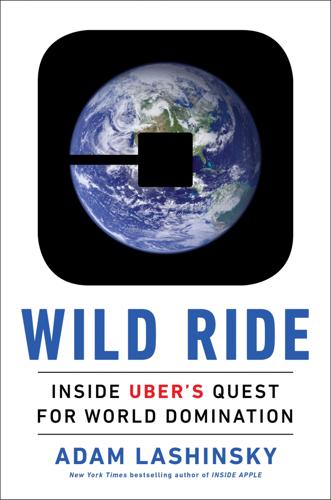
Wild Ride: Inside Uber's Quest for World Domination
by
Adam Lashinsky
Published 31 Mar 2017
The limo-hailing idea interested Camp, Kalanick, and the others, but it was hardly the only thing any of them were working on. Camp, after all, worked for eBay, and Kalanick was still at Akamai. But neither was in the kind of role that demanded all their attention. Life inside the big companies that acquired them allowed for plenty of time to work on their “side hustles” and also to hang out with each other. In early December 2008, the duo traveled to Paris for another industry conference, this one created by Loïc Le Meur, a French blogger who yearned to break into the ranks of Silicon Valley entrepreneurs. Together with his wife at the time, Géraldine, he succeeded in attracting a group of many of the best young Internet personalities from the United States, who needed little arm-twisting to join a boondoggle in Paris.
…
“I by no stretch hated those jobs, but I wasn’t super passionate about them,” he tells me over lunch in Manhattan Beach, a tony community near Los Angeles International Airport and not far from Campbell’s current home in Long Beach. “I just wasn’t excited to go to work on Monday.” What was getting Campbell excited was what he calls his “side hustle,” a trendy expression associated with the so-called gig economy that once would have been called moonlighting. He was intrigued by personal finance, suddenly having some considerable disposable income, and so in 2012 he started a blog targeted at people like himself. It’s called Your Personal Finance Pro, with the tagline “Financial Advice for Young Professionals.”
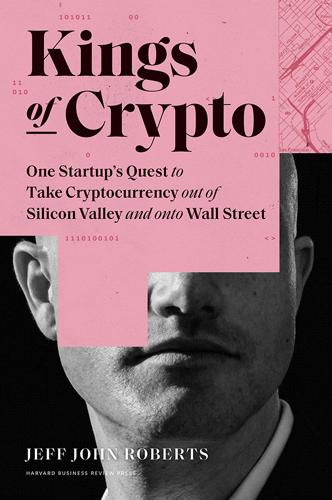
Kings of Crypto: One Startup's Quest to Take Cryptocurrency Out of Silicon Valley and Onto Wall Street
by
Jeff John Roberts
Published 15 Dec 2020
He wore mismatched Hello Kitty socks and ate lemons, including the rinds. At the urging of his libertarian father, Dmitry, he took an interest in the cryptocurrency called bitcoin. He soon became absorbed. While still in high school, he launched an online news site called Bitcoin Magazine as a side hustle, persuading cryptocurrency fans to pay for his lucid essays about digital money and cryptography. Upon finishing high school, Vitalik used the proceeds to travel the world and talk to others with big ideas about bitcoin and how to improve it. He hit Amsterdam, Tel Aviv, and bitcoin’s ground zero, San Francisco, where, like many others, he spent a short stint hanging out at Coinbase’s Bluxome Street office.
…
Good advice is not always heeded, and in this case, the politics and power struggles went on unabated as Balaji pushed out designers and a head engineer. Also toppled was Mike Lempres, the veteran legal fixer who had tried to get Brian to warm to Washington, DC. Lempres had worked at the top levels of the Justice Department and once, as a side hustle, he had served as mayor for the affluent Silicon Valley town of Atherton. But none of this compared to what he saw at Coinbase in late 2018. “I’ve been the mayor of a California town, but I’ve never seen a place as political as Coinbase,” he said on his way out the door in the spring of 2019. Lempres would remain philosophical about his ouster and still speaks warmly of Brian, if not of his lieutenants.
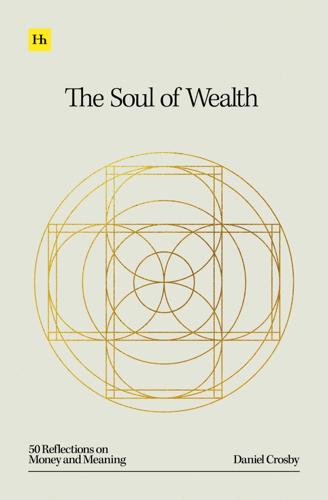
The Soul of Wealth
by
Daniel Crosby
Published 19 Sep 2024
If traveling the world is your thing, you’ve got a leg up on soaking up the best life has to offer. Here’s a tip: Try saving for your retirement by matching each dollar saved with a dollar for a big trip. Entrepreneurial spirit: Starting your own side hustle isn’t a sure thing, but it’s no coincidence that the average millionaire has multiple streams of income. Consider a side hustle that allows you to start small and iterate until you find a fit between what you do and what the market needs. Negotiation skills: Advocate for yourself across financial situations, including asking for a raise at work, or to land a bigger and better salary elsewhere.
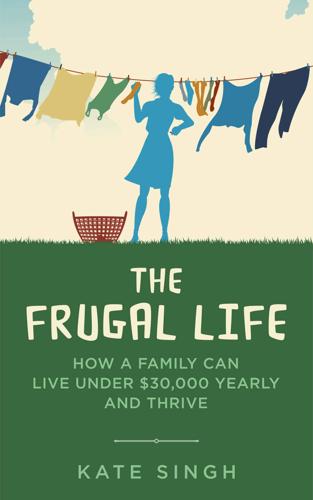
The Frugal Life: How a Family Can Live Under $30,000 and Thrive
by
Kate Singh
Published 31 May 2019
It can be downright drudgery. However, this isn't that often and it usually means I need a day off. There are many days I look about me in gratitude and feel blessed that I have this sweet home when so many struggle with housing or high rent. I've done the commutes from hell and worked in the offices and had the side hustle cafe jobs to pay off debt. I know what it's like to wake in the dark to an alarm clock and get home in the dark to an empty, cold apartment and eat cereal for dinner. So, when I smell a pot of stew simmering on the stove and hear music coming from the living room, when I sit for my afternoon tea or coffee and watch a sitcom on TV in the middle of the day while pretending to fold laundry, or when I have lunch outside with my boys and talk about all the things five and seven-year-olds talk about, I am loving this job!
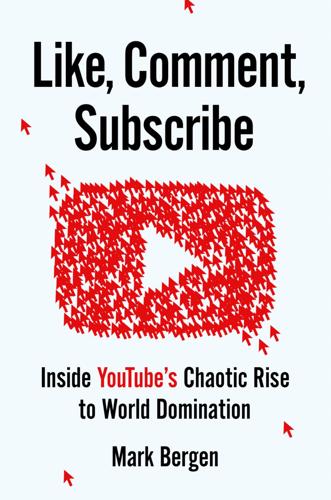
Like, Comment, Subscribe: Inside YouTube's Chaotic Rise to World Domination
by
Mark Bergen
Published 5 Sep 2022
Lumped with ad sales, those products helped YouTube rake in more than $20 billion that year, hitting the goal Wojcicki set back in 2015. And YouTube began spreading its wealth more widely again, quietly expanding the pool of creators eligible for payments since slicing that number in 2018 after its scandals. During 2020 countless new broadcasters turned to YouTube for money, a side hustle in a profession less than two decades old. By the following year, the company would announce that more than two million creators were in its partner program—not quite the sum before the 2018 reduction but still one of the largest, most complicated payments systems on the planet. YouTube reignited a marketing program, “Creators for Change,” that handpicked stars to talk about issues like bullying and racism.
…
See creators CookieSwirlC channel, 240 cooking videos, 248 coolhunters (community managers) and comment section, 94 curation role of, 56–57 and makeup tutorials, 188–89 and PewDiePie, 221 replaced by algorithms, 99–102, 122, 399–400 “Spotlight” page of, 208 Stapleton’s move to, 207, 208 trends tracking of, 208 Cooper, Anderson, 89 Cooperstein, Ezra, 112 copyright and acquisition offers, 51 and advertising, 108 and Content ID, 74 creators’ evasion of filters, 149 and Digital Millennium Copyright Act (DMCA, 1998), 35, 36, 37 early days of YouTube, 25–26, 52 in Europe, 365, 371 and Johnson’s content, 120 Pozner’s copyright claims, 327 screeners’ involvement in, 319–20, 327 and takedown requests, 33–34 three-strikes rule, 138 and Viacom negotiations/lawsuit, 61, 62, 97–98 Cosmic Panda (website redesign), 158 costumes, popularity of, 305–7 Coulter, Ann, 86 counter-speech, 216, 217 Couric, Katie, 98 COVID-19 pandemic, 374–76, 377–78, 385, 390, 397, 399 Craven, Wes, 101 Creative Artists Agency (CAA), 72 Creative Lab of Google, 147, 207–8 creators and ad-friendly mandate, 267–68, 274, 282–83 and Adpocalypse (boycott), 288–90, 300, 310 ads removed from content of, 267–68 and algorithms of YouTube, 297 analytics dashboard of, 157 anonymous, 172–73 Black creators, 261–62, 293, 338–39, 378 and bullying problem at YouTube, 262–63 burnout of, 385, 392 camaraderie among, 40 and celebrity status, 40–42, 248 (see also stars/celebrities of YouTube) and changes to algorithm, 155, 156–60, 164 and comments removed from kids’ videos, 371 commercial agreements of, 67 complaints from, 268, 332–33 conservative and right-wing, 268–69 control over types of ads, 347 and COVID-19 pandemic, 390 and culture of YouTube, 254–55 data provided to, 117 departures from YouTube, 257, 385–86 difficulty of work for, 254–55, 256–57 dollar-sign indicators for, 268 efforts to organize, 288, 393 and egalitarian claims of YouTube, 393 endemic, 248 flaunting/bending rules, 149 frustrations of, 256 and grants from YouTube, 112, 134 and harassment policies, 366–67 increasing success of, 78–79 lines between persona and performer, 280 mass deletion of accounts (Elsagate), 314 merchandising and sponsorship opportunities, 392 and Originals series of YouTube, 253–54, 261 penalty box for troublesome, 235, 292, 296, 327, 346 people of color as, 40, 159, 339 playbook for, 129 recruited to MCNs, 182–83 rewarding trusted, 368 and “Rewind 2018” video, 351–52 and rights to material, 133 and rival video services, 78 and shooting at San Bruno offices, 331–35 side hustles of, 382 term origins, 130 transgender, 382–83 trust deficit growing in, 160 trust in judgement of, 323–24 video responses between, 39 volume of uploaded material, 6, 49, 140, 215–16, 389 and watch time of users, 157, 158–60 and Wojcicki, 261, 373 women’s experience as, 303 and YouTube Creator Summit, 250–51, 253, 262, 289–90 See also partner program; payment and income of creators; stars/celebrities of YouTube; specific creators “Creators for Change” program, 382 Creator Summit, 250–51, 253, 262, 289–90 Credit Suisse, 51–52 Crowder, Steven, 366, 367, 370 Cruikshank, Lucas (Fred Figglehorn), 65–66, 69, 77–78, 131, 169 “Crush On Obama” (Key of Awesome), 88 Cruz, Ted, 342, 367 cryptocurrencies, 390 Cuban, Mark, 49 curation team.
…
See multichannel networks neutrality emphasized at YouTube, 208–9 news content on YouTube, 136–41, 142–45, 275, 325–26, 388 News Corp, 51, 60, 198 Newsweek, 36 Newton, Casey, 319 “New World Order” theories, 267 The New York Times criticisms of YouTube, 338 on Disney’s acquisition of Maker Studios, 219 on impact of medically dubious videos, 366 on lonelygirl15 ruse, 50 on recommendation system, 298 on Rubin’s sexual misconduct, 348–49 on Stapleton, 2, 354–55 on Wojcicki, 203, 211 New Zealand terrorist attack (2019), 1–2, 10, 11, 357–61, 372 Next New Networks, 129 Nickelodeon, 131, 169, 293 Nielsen and Facebook, 251 nigahiga, 39, 110 Nightmare Fuel, 7–8 Nilsen, Ingrid (Missglamorazzi; TheGridMonster) coming out video of, 282 concerns about online invective, 262–63 departure from YouTube, 385–86 makeup application videos of, 188–89 and Obama interview, 259 recruited by Vessel, 251 Vlogmas series of, 247–48, 386 and walkout at Google (2017), 350 at YouTube Creator Summit, 250 North Korean government, 287 Nussbaum, Emily, 275 O Oakley, Peter, 57 Obama administration, 143 Obama, Barack, 88–89, 193–94, 213, 259–60, 326 Obama, Michelle, 287 Obama Girl, 94, 129 “objectives and key results” (OKRs), 151–52, 175 O’Brien, Trevor, 156–58 obscene content, 100 O’Connell, Dan, 44 O’Connor, Jennie, 337, 356–57, 359–60, 371, 380 Oliver, John, 244 O’Neal, Shaquille, 133 One America News Network, 387, 388 Orgill, April, 314 Orgill, Davey, 314 Originals series of YouTube, 253–54, 261, 293 original video posted to YouTube, 21–22 origins of YouTube, 15–18, 20–23, 26 “Our Brand Mission” video of YouTube, 4–5 outages, service, 34 P P&G, 283–84, 286 Padilla, Anthony, 67 Page, Larry and Alphabet, 257 aphorisms/Larry-isms of, 147 on artificial intelligence, 230–33 and Brin’s divorce, 201 as CEO, 146–47 and daily viewers, 252 and Friday staff meetings, 81–82 Google invented by, 45 and Google’s acquisition of YouTube, 54 and Google Video, 43, 44 and Kamangar, 150 on loading speed of videos, 151 management council of (“L Team”), 177 and Mehrotra, 202 and politics, 230 at post-election staff meeting, 272 and Ramaswamy-Wojcicki dispute, 200, 203 retirement of, 401 and Rose’s interview at TED Conference, 229–31 and Rubin’s exit package, 348–49 and searchable TV database project, 96–97 and sports, 129 10x decree of, 147 and Vessel, 251 and Viacom lawsuit, 99 and Wojcicki, 198, 199 Pakistan, 143 Pan, Yu, 21, 24–25 Panchapakesan, Venkat, 228 Papadopoulos, Christina, 194 Parkland, Florida, mass shooting in (2018), 326, 329 partner program and algorithm changes, 155, 156–60, 164 creators added in 2020, 382 eligibility thresholds for, 329 launch of, 70 Machinima’s gaming of, 125 opened to all creators, 163–65, 184 origins of, 66–70 special site access of, 124–25 and taxes, 120 Wong’s attraction to, 115 and Zappin’s Maker Studios, 112 See also payment and income of creators Patrick, Matthew (MatPat), 252–53, 280, 298, 377, 392 Patriot Act (2001), 82 Paul, Jake, 384 Paul, Logan, 321–24, 338, 352, 383–84 payment and income of creators and Adpocalypse (boycott), 288–90, 300, 310 and algorithm changes, 159 and creator economy of YouTube, 5, 258, 390, 391 “demonetized” creators, 268, 310 eligibility thresholds for, 329 engagement based (Moneyball proposal), 337–38, 341 equalized across creators, 329 inconsistent levels of, 173 inequities in, 258 as innovation of YouTube, 6 of kidfluencers, 396 as life changing, 115, 304 made available to everyone, 163–65 in most recent years, 391 and multichannel networks, 183–84 origins of program for, 66–70 by other social media platforms, 390, 391 of PewDiePie/Kjellberg, 8–9, 220–21, 279 as privilege, not right, 324 redesign of compensation system, 258 reduced without explanation, 255 and right-wing content, 227 and shooting at San Bruno offices, 337 and side hustles of creators, 382 slashed for creators of kid content, 368, 394 system managing, 255 unrelated to advertising, 392 and Zappin’s Maker Studios, 112 PayPal, 19, 20, 24–25, 52 pay-per-view business model, 130–31, 132–33 pedophiles, 313, 356, 371 penalties applied to users, 31 “penalty box” for troublesome creators, 235, 292, 296, 327, 346 Penna, Joe (MysteryGuitarMan), 158–59, 220 Penna, Sarah, 128, 159, 220 Pentagon deal of Google, 341–42, 349, 355 people of color as YouTube creators, 40, 159, 339 Pepe (cartoon frog), 275 Peppa Pig videos, 308, 309, 320 Peretti, Jonah, 190 perks at YouTube offices, 148 Perry, Katy, 91 PETA, 38 Peter Bjorn and John, 57 Peterson, Jordan, 301 PewDiePie and ad-friendly mandate, 274 and algorithms of YouTube, 275 and alt-right, 277–78 antisemitic content of, 277–78 “Call of Duty: Black Ops: Wager Match: Gun Game,” 123 celebrity of, 219 and changes to algorithms, 161–62 content shift of, 274–75 and counter-speech, 217 and “Death to all Jews” sign (Fiverr clip), 9, 277, 278, 279, 280 “DELETING MY CHANNEL AT 50 MILLION,” 273–74 and Disney, 219, 278 fan base/subscribers of, 8, 9, 161, 162–63, 187, 218, 280, 352, 354 “FUNNY GAMING MONTAGE!”

Make Your Own Job: How the Entrepreneurial Work Ethic Exhausted America
by
Erik Baker
Published 13 Jan 2025
People who quit their jobs might find themselves forced to string together a series of “side hustles” to earn a living—but just as it did for odd-jobs workers in the Great Depression, the entrepreneurial work ethic can help side-hustlers endure or even enjoy their new working life, its precarity offset by the virtues of self-management and flexibility. The journalist Daisy Jones speculates that the girlboss was undone in part by the fact that, despite Amoruso’s entrepreneurial intentions, the figure came over time to resemble “the archetypal careerist”—a kind of Organization Woman—more than she did the forms of selfhood valorized by “side-hustle culture.” “Young people today are having to work multiple jobs just to make ends meet,” she writes.
…
The National Bureau of Economic Research promoted research emerging from the “Entrepreneurship Initiative” at Rice University purporting to show that “the gig economy supports entrepreneurial activity.” Babson College, a business school in Massachusetts specializing in entrepreneurship, launched an MBA course called “Entrepreneurship and the Gig Economy,” which taught students how to “get contract work, line up side hustles, negotiate fees, and market themselves in a new kind of labor market.”15 Even analysts who acknowledged the potential for exploitation in the gig economy were often loath to question the underlying assumption that digital platforms were, at least ideally speaking, engines of entrepreneurship. The rise of the “sharing economy,” the NYU economist Arun Sundararajan wrote in 2016, posed a social choice between “two contrasting future worlds of work”—one populated by “disenfranchised drones,” and one by “empowered entrepreneurs.”
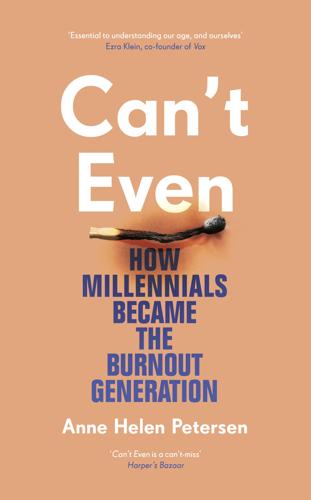
Can't Even: How Millennials Became the Burnout Generation
by
Anne Helen Petersen
Published 14 Jan 2021
And if you can’t get a job without a portfolio, and you can’t build a portfolio without internships, and you can’t afford to work for free to snag those internships—then, in theory, only a certain sort of person (read: a person with means, a person with private funding from their university, a person who can take out even more loans to cover an internship while they’re in school) can afford to provide “hope labor.” Some of us were only able to take on internships because we were living at home. Others, to make ends meet, relied on parents, or student loans, or side hustles. Many gave up the dream of finding work in their desired field entirely. But that didn’t mean the overarching idea that you should do what you love, no matter the cost, faded away. Sofia, a white woman who grew up “privileged as fuck,” had a string of unpaid internships at small museums and Sotheby’s before graduating from a small liberal arts college with a degree in art history.
…
“Then there are dress-up days at school, wholesome crafts that are supposed to improve fine-motor skills while avoiding screen time, and the need for everything to have a theme.” If a traditional leisure activity like, say, knitting, is actually pleasurable, mothers feel pressure to monetize it: Erika, who lives in a Boston suburb and describes her family as “struggling financially,” finds herself endlessly reading articles on Pinterest such as “21 Totally Legit Side Hustles for Stay-at-Home Moms.” “I’m constantly wondering if I could start a knitting business,” she says, “instead of just relaxing with a hobby I get pleasure out of.” “Time studies find that a mother, especially one who works outside the home for pay, is among the most time-poor humans on the planet,” Schulte writes in Overwhelmed, “especially single mothers, weighed down not only by role overload but also what sociologists call ‘task density’—the intense responsibility she bears and the multitude of jobs she performs in each of those roles.”16 Marielle Cloin, who studies family time use in the Netherlands, explains the problem to Schulte as “role overload”: “the constant switching from one role to the next.”17 In five minutes, a mom can go from texting a friend who’s been struggling to chopping fruit for a kid’s snack to checking a recipe online to regulating a sibling argument in the next room to trying to listen to her partner tell her about their day at work.
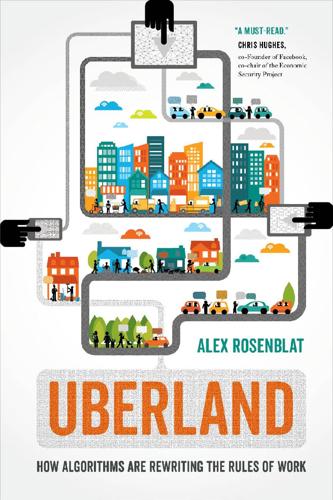
Uberland: How Algorithms Are Rewriting the Rules of Work
by
Alex Rosenblat
Published 22 Oct 2018
According to one prominent study, the 2007–2009 Great Recession produced the strongest such effect: perhaps the “need” for extra work has been reframed by the gig economy as a positive opportunity for “extra” income. In effect, the work culture that promotes the idea that everyone should get a side hustle puts a positive sheen on the declining economic prospects of male (and female) breadwinners. The sharing economy draws on these histories, delegitimizing and feminizing work by pigeonholing sharing-economy jobs as mere side hustles. Even when drivers and other gig economy workers depend on their earnings for major household expenses, like mortgages, college tuition, or medical expenses, the pervasive notion that these are just “side gigs” dismantles expectations about what these jobs should provide.
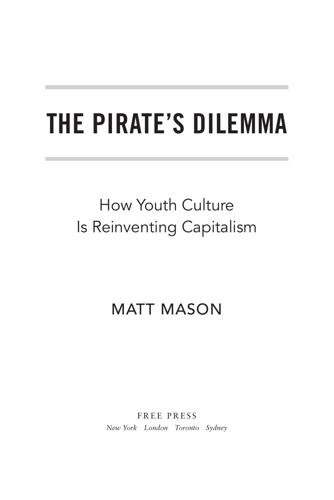
The Pirate's Dilemma: How Youth Culture Is Reinventing Capitalism
by
Matt Mason
When producers such as Dr. Dre, Timbaland, and Lil Jon work on tracks for other artists, they don't just produce the records they make, they also brand them, appearing in the videos and singing hooks, often cross-promoting their own product lines at the same time. For commercial hip-hop stars, having several side hustles is as important as having several clean pairs of kicks. Hip-hop is a game of braggadocio, and conspicuous consumption is no longer enough to impress. The more you can successfully build and extend your brand and still manage to keep it real, the more you can exaggerate your swagger. Diddy didn't invent the remix, as he claimed on his 2002 album We Invented the Remix.
…
Aside from the requisite clothing line, sneaker deal, and Hollywood career most rappers now feel naked without, “Bigg Boss Dogg” has his own brand of pornographic DVDs, malt liquor, foot-long hot doggs, a skateboard company, a youth American football league (the Snooperbowl), and a line of action figures, not to mention endorsing everything from mobile phones to scooters to “Chronic Candy.” [FN: A Swiss line of confectionary that tastes like weed and is banned in some parts of the United States.] A more diverse line of side hustles is hard to imagine, but Snoop pulls it off by endorsing products that reflect his personality. Hip-hop artists create business empires as a form of self-expression the way the rest of us build MySpace pages. Hip-hop instills passion in its fans and then demands participation, making entrepreneurs out of even the most reluctant.

Hiding in Plain Sight: The Invention of Donald Trump and the Erosion of America
by
Sarah Kendzior
Published 6 Apr 2020
The essays were shaped in part by the harsh conditions of Missouri, the state I call home, a state that had long been the bellwether of American politics and now served as the bellwether of American decline. But the crisis I documented was nationwide: rising political paranoia, opportunity-hoarding by wealthy elites, a “post-employment economy” of side hustles and unpaid labor, the weaponization of digital media by dictators and extremists, and the catastrophic consequences of unchecked corruption. These were not abstract concerns. The cumulative effect was a collective agony intensified by the all-American shame of seeing systemic breakdowns as personal failings.
…
The quote is from Trump’s 2004 CNN interview with Larry King, who you remember as a celebrity interviewer from your childhood but who was paid $225,000 in 2011 to do a puff piece interview with a Kremlin-friendly oligarch and whose show now airs on Russian state media, because seemingly everyone on earth now has a side hustle with the Kremlin.43 But since calming down and obeying the leader are the orders of the day—the orders, repeated like the drumbeat of a racing heart—you decide to see what he has to offer: Caller: I’d like to know how you handle your stress. Trump: I try and tell myself it doesn’t matter. Nothing matters.
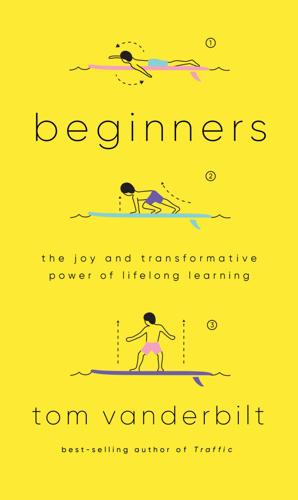
Beginners: The Joy and Transformative Power of Lifelong Learning
by
Tom Vanderbilt
Published 5 Jan 2021
The smallest waves at Rockaway gave me a little charge when I saw them on the surfcam. Where a friend might complain that the waves were not up to a certain standard, the fact that they were waves was usually enough for me. There was nothing I was bored about in surfing. Did I hope to get better? Of course. But surfing was not my job, not my side hustle, not even my life’s passion. It was just another of my “capricious and tenacious enthusiasms,” in the words of the writer James Dickey. I wanted to be as good as it took to keep it being fun for me. If I’m doomed to be a mediocre surfer, I’m okay with that. The word “mediocre,” after all, comes from Old Latin, meaning “halfway to the top.”
…
This was something I’d heard from various motor-skill researchers: As cool as it might sound, you don’t want Michael Jordan or Lionel Messi teaching your kid’s basketball or soccer camp. He would struggle to explain what he does, much less break it down for a nine-year-old. Like many New York enterprises, Wolf’s juggling was a side hustle. An avid birder, she spent most of her time working on the website for Cornell University’s Lab of Ornithology. Her roommate used to clown for now-defunct Ringling. “He’s not with the circus anymore, but he tours all over, with people like Britney Spears. Clowns in New York get a lot of gigs, actually.”

On the Edge: The Art of Risking Everything
by
Nate Silver
Published 12 Aug 2024
,” The New York Times, February 17, 2022, sec. Opinion, nytimes.com/2022/02/17/opinion/sway-kara-swisher-keith-rabois.html. GO TO NOTE REFERENCE IN TEXT a Barry’s Bootcamp: Candy Cheng, “VC Keith Rabois Has a New Side Hustle in Miami as a Barry’s Bootcamp Instructor,” Business Insider, March 31, 2021, businessinsider.com/why-vc-keith-rabois-new-side-hustle-at-barrys-bootcamp-2021-3. GO TO NOTE REFERENCE IN TEXT founders and hedge-funders: Ashley Portero, “11 Notable Techies Who Moved to South Florida in 2021,” South Florida Business Journal, December 22, 2021, bizjournals.com/southflorida/news/2021/12/22/techies-who-moved-to-miami-in-2021.html.
…
.[*15] There’s one other question you might ask: Penelope intends to spend more than $1 million in tournament buy-ins per year—so where the hell is she getting all this money? In poker, that question can have a variety of answers. Many touring pros had a big score early in their career. A lot have side hustles or sponsorship deals. A lot of money came into the poker community during the crypto boom—poker players were early adopters of Bitcoin and Ethereum, in part because crypto actually has some practical use cases in poker.[*16] And some players are just sharp at making the right connections. Poker attracts a lot of smart oddballs with creative schemes for making money.
…
“We get information, we straighten our prices. There’s something there—there’s a place for us all to live.” Essentially, FanDuel was offering sharp bettors a compromise: you can bet up to the amount that your information is worth. For someone like me—who treats sports betting as a perhaps marginally profitable side hustle—that might work reasonably well; a couple of grand is usually as much as I’d want to bet anyway. But that deal doesn’t work for a Spanky, for a Bob Voulgaris, and certainly not for a Billy Walters. For them, even five-figure bets aren’t necessarily enough. “I’m not interested in betting ten, twenty, thirty, forty, fifty thousand dollars.
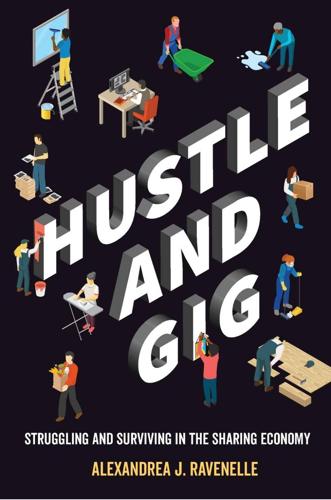
Hustle and Gig: Struggling and Surviving in the Sharing Economy
by
Alexandrea J. Ravenelle
Published 12 Mar 2019
There are also a few notable differences between the sort of people who become Airbnb hosts and the sort who work with Kitchensurfing. For instance, while some Kitchensurfing chefs engaged in their food work full time, few Airbnb hosts only hosted. Most had full-time occupations or identities outside Airbnb, whether as students, lawyers, writers, or small business owners, and their Airbnb work was a side hustle or part-time effort. Part of this divide derives from the fact that while Airbnb hosting can require multiple emails or being on call part of the time, it is often less labor-intensive and time-consuming than creating a menu, shopping for ingredients, and cooking for clients. Additionally, while Kitchensurfing chefs often hired assistants to help with large events, they were still expected to show up for such events.
…
So, it’s like it was strangely enjoyable to sort of leave the office at one in the afternoon and go down to some apartment and clean it up and welcome a guest, which is so different from the general cerebral work that I do on a day-to-day basis. A small, temporary change of pace can be interesting. Joshua would probably never consider cleaning houses for a living or working as a hotel’s front desk clerk, but as a short-term side hustle it has its appeal. At the end of our interview, he noted that he was moving cross-country and hiring his fiancée’s undocumented immigrant mother to manage the key distribution and cleaning. As he put it, he and his business partner “want to do as little manual labor as possible, turn [Airbnb listings] into passive income.”
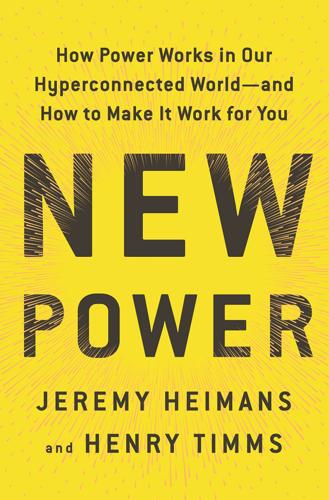
New Power: How Power Works in Our Hyperconnected World--And How to Make It Work for You
by
Jeremy Heimans
and
Henry Timms
Published 2 Apr 2018
This mirrors the increasing demands in today’s workplaces for people to play roles that go far beyond their more narrowly defined job descriptions—and to play across disciplines and skills. There’s an excellent chance your new marketing hire is learning to code on her lunch break. It is the era of the “side hustle”—a recent survey showed that almost a third of millennials now have an extra job on the side. • Founders are all-in and always on. They benefit from greater flexibility and autonomy than nine-to-fivers, but the boundaries between their work and their lives tend to be blurry. Of course, there is a dark side to this founder feeling.
…
The company goes public: Portia Crowe, “Snap Is Going Public at a $24 Billion Valuation,” Business Insider, March 1, 2017. “He just wants”: Austin Carr, “What Snapchat’s High-Profile Exec Departures Really Tell Us About CEO Evan Spiegel,” Fast Company, October 20, 2015. A Bentley University survey: “Millennials at Work,” Bentley University, November 11, 2014, 13. It is the era of the “side hustle”: CareerBuilder, “Millennials Significantly Outpacing Other Age Groups for Taking on Side Gigs,” PR Newswire, September 29, 2016. The reality that three: Deborah Gage, “The Venture Capital Secret: 3 Out of 4 Start-Ups Fail,” Wall Street Journal, September 20, 2012. A survey by ManpowerGroup: “Millennial Careers: 2020 Vision Facts, Figures and Practical Advice from Workforce Experts,” ManpowerGroup, 2016.
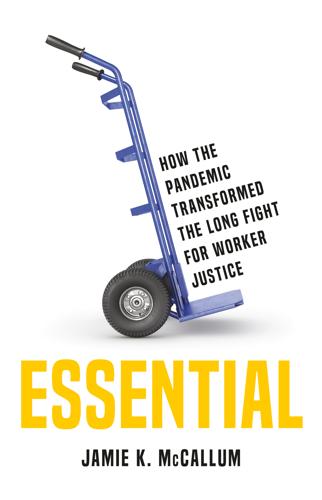
Essential: How the Pandemic Transformed the Long Fight for Worker Justice
by
Jamie K. McCallum
Published 15 Nov 2022
“But many of these workers do not earn enough to adequately support their families, even at a subsistence level.”6 Meanwhile, mid-wage jobs were hollowed out while high-paying ones took much longer to bounce back.7 The recession especially affected heavily unionized sectors like the building trades because home and large office construction stalled after the housing crisis. In the wake of the recession’s economic fallout, Americans scrambled to find work, creating an opening for new start-ups to sell low-wage workers and the unemployed on the concept of a “gig” or “side hustle.”8 Once viewed as temporary, these types of jobs quickly became a permanent feature of the economy. Uber and TaskRabbit were both founded in 2008; they were joined in 2011 by Postmates, in 2012 by Instacart and Lyft, in 2013 by DoorDash, and by Shipt in 2015. The emergence of the gig economy worsened working conditions nationwide and rapidly expanded the ranks of low-wage, hyperexploited workers.
…
Rosenblat quoted in Bloomberg: “It was dire economic straits that gave birth to the gig economy in the first place. Uber and Lyft sprang from the 2008 financial crisis—a time when many people were willing to accept that any work was better than none at all. Americans rallied around the concept of a ‘side hustle,’ and governments effectively endorsed the practice by declining to get involved in the smartphone-based labor markets taking shape.” Joshua Brustein, “The Gig Economy Was Built to Thrive in a Downturn—Just Not This One,” Bloomberg, May 5, 2020, www.bloomberg.com/news/newsletters/2020-05-06/the-gig-economy-was-built-to-thrive-in-a-downturn-just-not-this-one. 9.
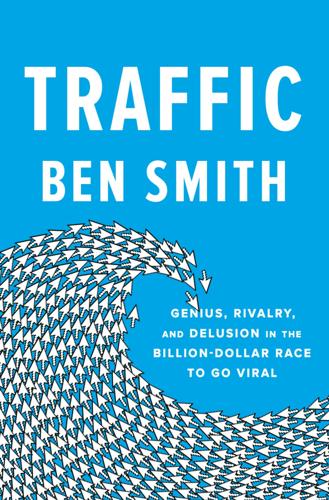
Traffic: Genius, Rivalry, and Delusion in the Billion-Dollar Race to Go Viral
by
Ben Smith
Published 2 May 2023
“Fuck you, I’ll buy you out—get out of my face,” the American recalled replying, and sent Nick away with $250,000. Nick remembered it differently, saying he parted because the company “struggled with software,” and he saw a better path through the same space with tech friends in London. Nick’s next venture began with a side hustle: he was great at throwing parties. It was the core of his personality, really, the exterior of a smooth insider with the calculation and thin skin of the outsider he sometimes felt like—gay and Jewish and half-Hungarian. He had the connections to get the right people to come, and the neurosis to care whether they did.
…
Drudge’s biographer Matthew Lysiak later reported that Drudge had offered Andrew a 25 percent stake in the website version of his email newsletter that he was launching. But Andrew wasn’t willing to give up his industry job, much as he hated it, for such an uncertain venture, and so they parted instead with a handshake deal that The Drudge Report would be Andrew’s side hustle. Between 9:00 a.m. and 3:00 p.m., Andrew would be the one posting its links, and Matt would pay him “what he could.” Andrew was awed by the meeting. “That guy is going to change the world,” he told his girlfriend as the Geo Metro drove away. Working for Drudge was a dream of relevance and power.

The Measure of Progress: Counting What Really Matters
by
Diane Coyle
Published 15 Apr 2025
Ordering in: The rapid evolution of food delivery. https://www .mckinsey.com/industries/technology-media-and-telecommunications/our-insights /ordering-in-the-rapid-evolution-of-food-delivery McKinsey & Company. (2022). Freelance, side hustles, and gigs: Many more Americans have become independent workers. https://www.mckinsey.com/~/ media/mckinsey/featured%20 insights/f uture%20of%20america/f reelance%20side%20hustles%20and%20gigs%20 many%20more%20americans%20have%20become%20independent%20workers /f reelance-side-hustles-and-g igs-many-more-americans-have-become -independent -workers-final.pdf McNerney, J., Savoie, C., Caravelli, F., Carvalho, V.
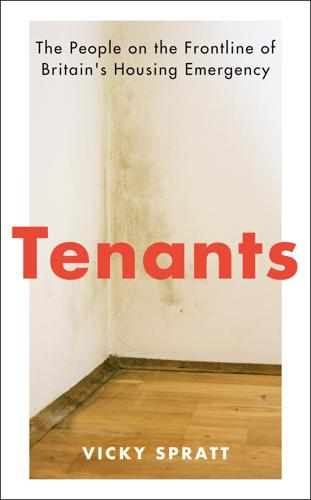
Tenants: The People on the Frontline of Britain's Housing Emergency
by
Vicky Spratt
Published 18 May 2022
At some point, though, some of Wythenshawe’s once-utopian social homes have ended up in the hands of private landlords. Dan and Amy’s owned ‘a few’ in the area, all similarly modest family homes intended as municipal housing. Landlording wasn’t his main job, Amy told me. He worked in construction by day – buy-to-lets were his pension, his lucrative side hustle. He was, Amy said, ‘absolutely wadded’. This – one of the ugliest aspects of the housing crisis – is rarely addressed: that turning houses into assets and not homes has emboldened some ordinary people who are perfectly happy to screw their neighbours out of the right to decent shelter, because it makes them wealthier.
…
Three of them told me they were ‘cousins’. They were originally from Hungary. Their friend was also from Hungary. They all came here for work. The most talkative cousin called himself George,* but wouldn’t tell me his real name because, as well as doing shifts in production in a nearby foam factory, he had a side hustle: selling phones and cars on Facebook but not paying tax on that work. The other two did ad hoc gardening and casual construction jobs. In practice, that’s one area where immigration actually forms part of the solution to the housing crisis: in 2015 the Chartered Institute of Building noted that any caps on immigration would harm housebuilding rates, as not enough British-born workers were either trained or interested in careers in construction, and migrants had been filling the gap.

The Lonely Century: How Isolation Imperils Our Future
by
Noreena Hertz
Published 13 May 2020
Spain Bears Much of the Pain’, New York Times, 14 February 2019, https://www.nytimes.com/2019/02/14/business/spain-europe-middle-class.html. 72 Jennifer Szalai, ‘Going for Broke, the Middle Class Goes Broke’, New York Times, 27 June 2018, https://www.nytimes.com/2018/06/27/books/review-squeezed-alissa-quart.html. 73 Sarah Graham, ‘Meet The Young Nurses Who Need A Side Hustle Just To Pay Their Bills’, Grazia, 12 July 2017, https://graziadaily.co.uk/life/real-life/meet-young-nurses-need-side-hustle-just-pay-bills/. 74 ‘Nursing Shortage: 52% of US Nurses Say It’s Gotten Worse’, Staffing Industry Analysts, 12 November 2019, https://www2.staffingindustry.com/site/Editorial/Daily-News/Nursing-shortage-52-of-US-nurses-say-it-s-gotten-worse-51871; in both the US and UK academics can fall into this trap too.
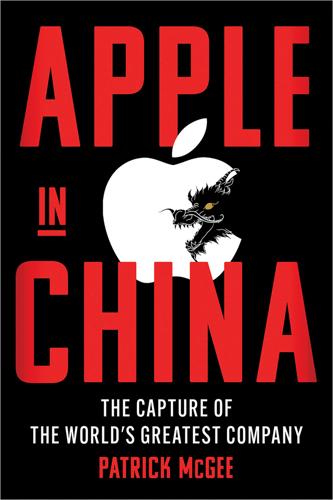
Apple in China: The Capture of the World's Greatest Company
by
Patrick McGee
Published 13 May 2025
It wasn’t an experience he ever wanted to replicate, and he became determined to get an education. The tobacco fields also taught him that not a single penny “should EVER be wasted or conceded in negotiation.” But Blevins wasn’t just frugal; he was competitive about it. Getting the best deal was imprinted on his psyche, and he’d turned it into a game. His father had a side hustle running a used car lot, where Tony and his brother worked as teenagers. Each month they’d hold a competition: “Whoever could sell the shittiest car for the most profit would win,” is how one colleague remembers him describing it. The gifted prankster managed to get a full academic scholarship to North Carolina State University to study industrial engineering.
…
In 2000, the dotcom crash curtailed the business. But whatever, he was young, had learned a ton, and missed home. He sold his company and returned to studying in Portland. Missionary Skills After years of running his own business, Ford found earning a degree in marketing something of a bore. He got a side hustle at CompUSA, the electronics retailer that Steve Jobs had inked a deal with in 1997 to create a “store within a store.” Ford took care of the Mac section for a manager who hated Apple, and as the iMac took off, the Apple section ended up supporting the whole store. Someone from Cupertino took notice of Ford’s leadership, and the month he graduated from Portland State he was hired by Apple to help build the brand inside other retail stores.
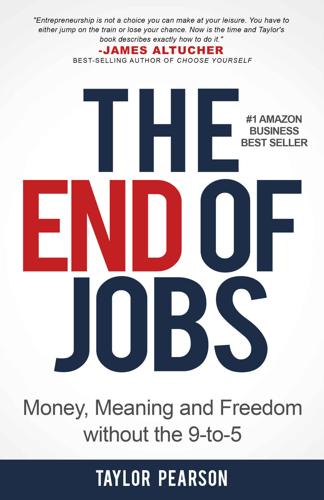
The End of Jobs: Money, Meaning and Freedom Without the 9-To-5
by
Taylor Pearson
Published 27 Jun 2015
A corporate executive that starts new divisions or spins off a company from inside an existing company is more entrepreneurial than someone owning an equity stake and merely following the directions of their partners. Freelancers that take no initiative to build new systems that improve their work or sales process could be less entrepreneurial than an employee with a side hustle that’s making it happen. These are simply generalizations intended to demonstrate that although there’s not a name for it, you can invest in entrepreneurship as a skill set just like you can knowledge. Investing in Entrepreneurship Once we see entrepreneurship as an asset or resource that can be invested in, we can apply similar, basic economic concepts towards it and start making better, more reasoned decisions.

The View From Flyover Country: Dispatches From the Forgotten America
by
Sarah Kendzior
Published 24 Apr 2015
—Originally published July 1, 2014 PART II The Post-Employment Economy Surviving the Post-Employment Economy A lawyer. A computer scientist. A military analyst. A teacher. What do these people have in common? They are trained professionals who cannot find full-time jobs. Since 2008, they have been tenuously employed—working one-year contracts, consulting on the side, hustling to survive. They spent thousands on undergraduate and graduate training to avoid that hustle. They eschewed dreams—journalism, art, entertainment—for safer bets, only to discover that the safest bet is that your job will be contingent and disposable. Unemployed graduates are told that their predicament is their own fault.
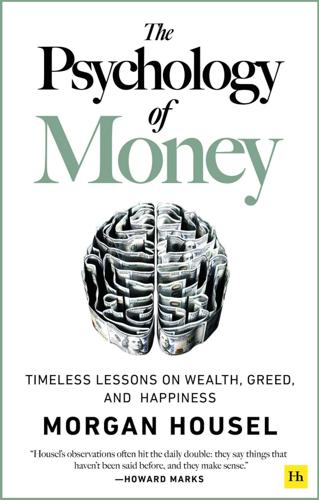
The Psychology of Money: Timeless Lessons on Wealth, Greed, and Happiness
by
Morgan Housel
Published 7 Sep 2020
Gupta sat on the board of directors of Goldman Sachs, which surrounded him with some of the wealthiest investors in the world. One investor, citing the paydays of private equity tycoons, described Gupta like this: “I think he wants to be in that circle. That’s a billionaire circle, right? Goldman is like the hundreds of millions circle, right?”¹² Right. So Gupta found a lucrative side hustle. In 2008, as Goldman Sachs stared at the wrath of the financial crisis, Warren Buffett planned to invest $5 billion into the bank to help it survive. As a Goldman board member Gupta learned of this transaction before the public. It was valuable information. Goldman’s survival was in doubt and Buffett’s backing would surely send its stock soaring.
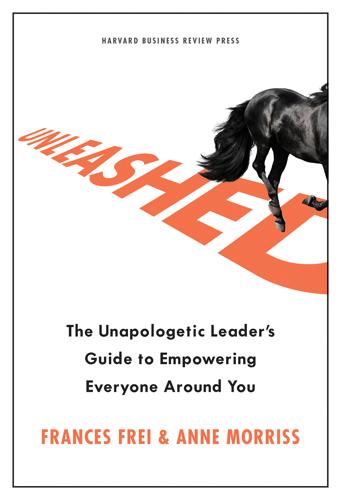
Unleashed
by
Anne Morriss
and
Frances Frei
Published 1 Jun 2020
They included more rigorous personal reflection work and a student-led Honor Code movement. Momentum increased dramatically in a community fueled by its own high standards and deep devotion, a community fully unleashed. Add “culture” to your title Culture change is often viewed as important but not urgent, a lofty side hustle you get to pursue only after you’ve done your day job. But the most successful organizational leaders we know are the ones who put culture at the very center of what they do. They’re the CEOs who implicitly replace the “e” with a “c” and interpret their roles as chief culture officers first. They’re the VPs of product or sales or operations who mentally tack on “and culture” to whatever operating title they’ve earned.
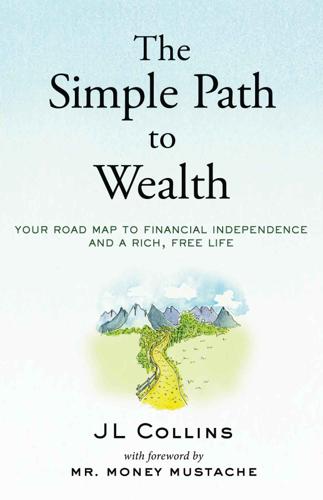
The Simple Path to Wealth: Your Road Map to Financial Independence and a Rich, Free Life
by
J L Collins
Published 17 Jun 2016
I can tell you, she was a White House intern in the 90s (before Monica Lewinsky’s time) and she’s burned through three passports; collecting stamps from Haiti, India, Estonia, Japan, France, Denmark, Norway, Finland and Italy along the way. The Russian border patrol once detained her, seizing her passport. She’s been a professional designer for over 15 years and outside of her day job, she’s illustrated three books and authored two. She restores and sells mid-century furniture with her poet husband as a side hustle. They met in a blizzard. All that is well and good, but when it comes to her success with this cover and working with me, my money says the key is that experience with the Russians. Cover Illustration I love the illustration on this book’s cover. I’ve been friends with Trisha Ray (www.trisharay.com) dating back to my bicycle trip thru Ireland where she and her then fiancé kidnapped me, hauled me up to Galway for a music festival and then abandoned me on the side of the road to find my own way back.

Meet the Frugalwoods: Achieving Financial Independence Through Simple Living
by
Elizabeth Willard Thames
Published 6 Mar 2018
Grow your wealth, which in my case is through low-fee index funds and our rental property. Embrace frugality in order to achieve all of these objectives more quickly and more sustainably. If you can’t save enough, even with a regimen of true extreme frugality, then you probably need to look for ways to earn more, either through finding a new job or adding on a second job or side hustle. There are a number of different formulas that people use to determine how much money they’ll need in order to reach financial independence, but at the most basic level, it’s a question of how much money you need to live on every year. In light of that, there are actually only three variables in the financial independence equation: income, expenses, and time.
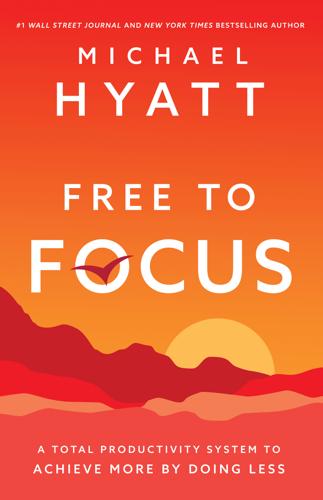
Free to Focus: A Total Productivity System to Achieve More by Doing Less
by
Michael Hyatt
Published 8 Apr 2019
Jon Acuff, New York Times bestselling author, Finish: Give Yourself the Gift of Done “You need a system to succeed, and Free to Focus can be that system. Michael’s no-nonsense, all-helpful advice can help anyone prioritize their life to do more of what’s important to them.” Chris Guillebeau, author, Side Hustle and The $100 Startup “Overwork is a pervasive form of personal sabotage. Michael Hyatt presents a well-researched but refreshing alternative that allows us to breathe, play, and connect while still accomplishing the very best we have to offer at work. This book will restore the inner peace that makes work—and life—worthwhile.”
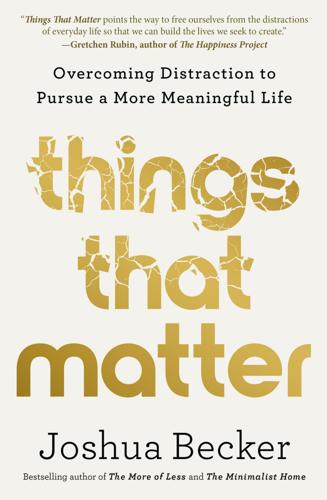
Things That Matter: Overcoming Distraction to Pursue a More Meaningful Life
by
Joshua Becker
Published 19 Apr 2022
Whether we’re thinking about how to find it, make it, grow it, or save it, the desire to acquire more results in our constantly directing our attention toward it. There is opportunity to increase wealth all around us, all the time. Whether it’s working overtime, chasing a new client, starting a side hustle, or managing our investments, the pursuit of money requires our time and energy. But that’s not all. The pursuit of money begins to circumvent and even alter our values. When the desire for money is present in our lives, we become almost different people, often engaging in behaviors we would otherwise avoid.
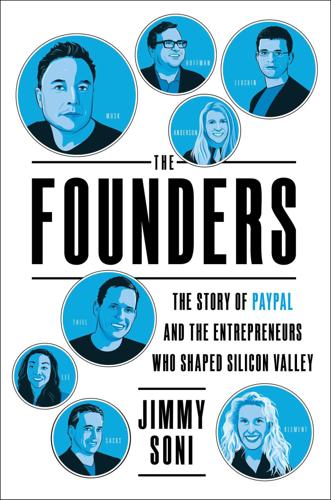
The Founders: The Story of Paypal and the Entrepreneurs Who Shaped Silicon Valley
by
Jimmy Soni
Published 22 Feb 2022
And if you did, you would have to be escorted,” Levchin recalled. For a Jewish refugee, the badges evoked painful parallels. “I didn’t have to do this, but I had relatives who did,” he said. Levchin quit the US Army Corps of Engineers, though he kept the tag, a fraught relic from the strangest of his college side hustles. * * * By graduation, Levchin was running NetMeridian while simultaneously cramming for final exams and mulling his next step. While his friends prepared for their lives away from Urbana-Champaign, Levchin found himself tethered. NetMeridian was successful, but in a world before cloud computing, the company relied on its massive, immobile server.
…
French-born, Iranian-American engineer Pierre Omidyar had not set out to build an online auction behemoth when he coded AuctionWeb and posted it to his personal website, www.ebay.com, so named for his web consulting company, Echo Bay Technology Group. At first, AuctionWeb featured just Omidyar’s discards, including a broken laser pointer, which he listed for $14.83. When someone actually purchased it, Omidyar was astonished—and realized that his side hustle might have a bright future.II Four years later, AuctionWeb was eBay—a billion-dollar publicly traded company and a defining dot-com brand. The earliest account of a Confinity-eBay linkage came from April 1999. On April 8, Thiel and his team met with Peter Davison and Graeme Linnett, two of Confinity’s investors.
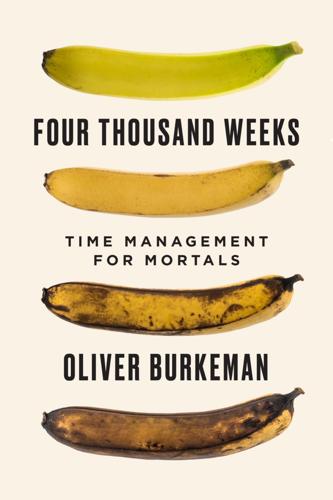
Four Thousand Weeks: Time Management for Mortals
by
Oliver Burkeman
Published 9 Aug 2021
The derision we heap upon the avid stamp collector or train spotter might really be a kind of defense mechanism, to spare us from confronting the possibility that they’re truly happy in a way that the rest of us—pursuing our telic lives, ceaselessly in search of future fulfillment—are not. This also helps explain why it’s far less embarrassing (indeed, positively fashionable) to have a “side hustle,” a hobbylike activity explicitly pursued with profit in mind. And so in order to be a source of true fulfillment, a good hobby probably should feel a little embarrassing; that’s a sign you’re doing it for its own sake, rather than for some socially sanctioned outcome. My respect for the rock star Rod Stewart increased a few years back when I learned—from newspaper coverage of an interview he’d given to Railway Modeler magazine—that he’d spent the last two decades at work on a vast and intricate model railway layout of a 1940s American city, a fantasy amalgam of New York and Chicago complete with skyscrapers, vintage automobiles, and grimy sidewalks, with the grime hand-painted by Sir Rod himself.
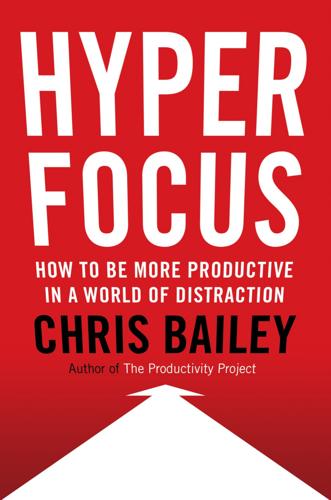
Hyperfocus: How to Be More Productive in a World of Distraction
by
Chris Bailey
Published 31 Jul 2018
A researcher’s most important tasks might include designing and running studies, teaching, and applying for funding. My most important tasks are writing books and blog articles, reading research to encounter new ideas, and giving talks. In your personal life, your purposeful tasks might include spending time with your kids, working on a side hustle, or volunteering with a local charity. A perfectly productive person would focus on only the top two quadrants of the above chart. If things were that simple, though, you wouldn’t need this book. As you’ve no doubt experienced, sticking within the borders of necessary and purposeful work is much easier said than done.
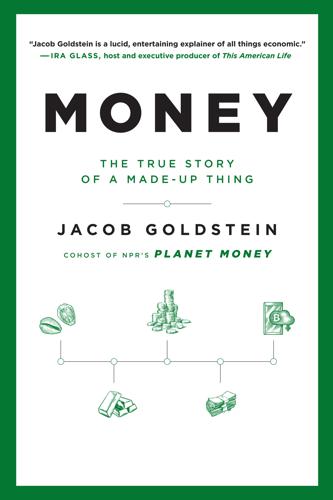
Money: The True Story of a Made-Up Thing
by
Jacob Goldstein
Published 14 Aug 2020
He was a boy genius who grew up in Philadelphia and graduated first in his class at Princeton at age fifteen, in 1801. Like a lot of people who finish college and don’t know what to do, he became a lawyer and hated it. He wrote in a letter that he saw his life reduced to “pleading the defenseless cases of vice and misfortune, and then dying like a mushroom on the soil which had seen me grow.” As side hustles, he ran a literary magazine and edited the journals of William Clark, of Lewis and Clark fame. When Biddle was twenty-four, he was elected to the Pennsylvania state legislature. Fighting about banking and money was America’s national pastime in the early nineteenth century (baseball hadn’t been invented yet), and Biddle jumped into the middle of it.
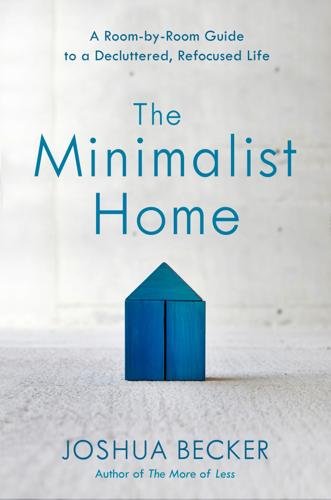
The Minimalist Home: A Room-By-Room Guide to a Decluttered, Refocused Life
by
Joshua Becker
Published 18 Dec 2018
Nowadays I lease a small office because I find that putting some distance between myself and home helps me concentrate on my work better. But I still sometimes opt to work from the dining room table, and I still enjoy it when I do. More and more people run businesses from home these days, whether it’s a full-time gig or a side hustle. My next-door neighbor sells stuff on eBay. Another friend runs Facebook ads for businesses. I know others who sell motorcycle tires and “survivalist gear” (whatever that is) from their homes. An estimated 26 million Americans have a home office that they could legitimately claim a tax deduction for.1 A lot of people with more traditional jobs bring work home with them to finish up in the evenings.
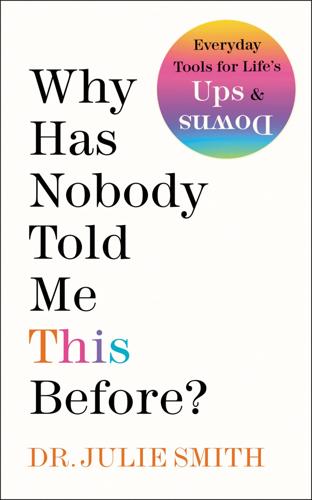
Why Has Nobody Told Me This Before?
by
Dr. Julie Smith
Published 11 Jan 2022
Values – When the demands you face are in direct conflict with your personal values. Let’s be clear. Burnout is a serious health issue. Anyone who thinks they may be experiencing burnout needs to act as soon as possible. But we also have to be realistic. Some pressures you can say no to (like taking on that side hustle on top of a 50-hour working week) but others you can’t (such as physical illness or financial pressures or the emotional strain of a relationship breakdown). When you are fighting to keep a roof over your head and feed your children every day by working two jobs, and trying to be the best parent you can in between, there is no option to just remove stress from your life and take on an idyllic morning routine of meditation and yoga.

Don't Trust Your Gut: Using Data to Get What You Really Want in LIfe
by
Seth Stephens-Davidowitz
Published 9 May 2022
Data from the Tax Data Researchers suggests there are at least 10,000 independent creatives who earn enough to be in the top 1 percent of earners. How many people try to be independent creatives? There is conflicting information here. According to the Bureau of Labor Statistics, there are 51,880 “independent artists, writers, and performers,” not all of whom own their own business. However, there are also other people who have a side hustle in a creative field but don’t consider that their main profession. Other survey data suggests that 1.2 million Americans primarily make their living as working artists. This suggests the 10,000 independent creatives in the top 1 percent would make up roughly 1 percent of working artists. If this were true, the odds of entering the top 1 percent would be about as good for an artist as they would be for an average American.
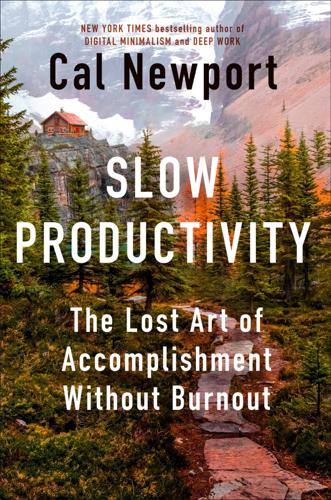
Slow Productivity: The Lost Art of Accomplishment Without Burnout
by
Cal Newport
Published 5 Mar 2024
Wait instead to make a major change until you have concrete evidence that your new interest satisfies the following two properties: first, people are willing to give you money for it, and second, you can replicate the result. In the context of writing, this might mean you’ve sold multiple books and proven there’s a robust audience for your characters. In entrepreneurship, by contrast, this might mean that your side hustle generates a steady stream of sales. Once you’ve passed these thresholds, however, take action. This doesn’t necessarily mean quitting your current job completely. It might instead mean that you reduce your hours, or take an unpaid leave. The key is to harness the stark motivation generated by the need for a pursuit to really work out.
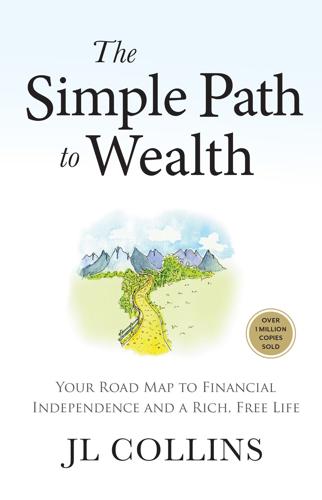
The Simple Path to Wealth (Revised & Expanded 2025 Edition): Your Road Map to Financial Independence and a Rich, Free Life
by
JL Collins
This is fine if it is how you want to spend your time. If you are comparing real estate investment to the approach in this book, you need to factor in this extra time you will be spending: Simple Path versus real estate and your time. Perhaps, like me, you’d rather spend your time growing your career, developing a side hustle, or just hanging out on the beach. I make $XX,XXX a year; where exactly should I be putting my money? That’s exactly the subject of this book. In short: —Pay off any debt. —If you have an employer that offers one, max out your 401(k). —If you have the opportunity, fund an HSA. —Fund your IRAs (Roth or traditional, depending on your income, or both).
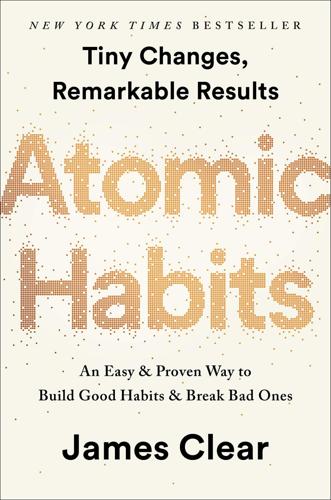
Atomic Habits: An Easy & Proven Way to Build Good Habits & Break Bad Ones
by
James Clear
Published 15 Oct 2018
Meanwhile, the quality group sat around speculating about perfection. In the end, they had little to show for their efforts other than unverified theories and one mediocre photo.* It is easy to get bogged down trying to find the optimal plan for change: the fastest way to lose weight, the best program to build muscle, the perfect idea for a side hustle. We are so focused on figuring out the best approach that we never get around to taking action. As Voltaire once wrote, “The best is the enemy of the good.” I refer to this as the difference between being in motion and taking action. The two ideas sound similar, but they’re not the same. When you’re in motion, you’re planning and strategizing and learning.
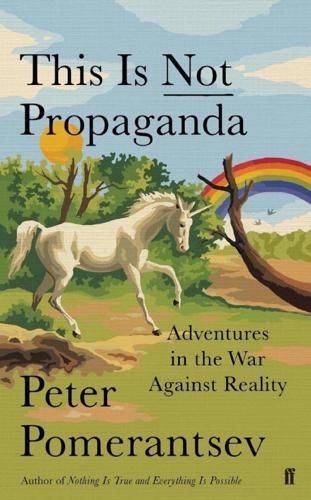
This Is Not Propaganda: Adventures in the War Against Reality
by
Peter Pomerantsev
Published 29 Jul 2019
She felt she sabotaged herself, bringing in only twenty Facebook followers, whereas her colleagues brought in hundreds. Ong noted that no one, at any level in this business, ever described their activity as ‘trolling’ or producing ‘fake news’. Everyone had their own ‘denial strategies’: the architects stressed it was merely a side hustle to their regular PR work and thus didn’t define them, and anyway they weren’t in charge of the whole political campaign; the community-level operators said someone else was leaving the really nasty, hateful comments. In any case this was the architecture of online influence, which would shift into a more aggressive gear when Duterte came to power.
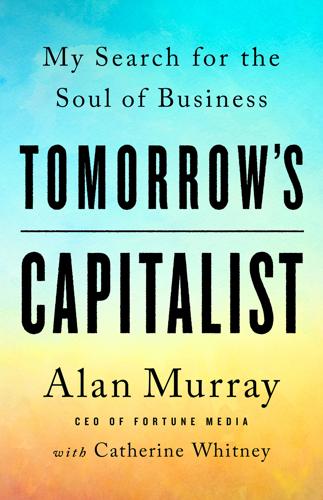
Tomorrow's Capitalist: My Search for the Soul of Business
by
Alan Murray
Published 15 Dec 2022
He cited the 2017 US tax bill, supported by the Business Roundtable, as an example. The lion’s share of the benefits, he argued, ended up in the hands of the top 1 percent, increasing the income inequality underlying many social problems. “What I see are well-meaning activities that are virtuous side hustles,” he argued, “while key activities of their business are relatively undisturbed.… Many of the companies are focused on doing more good, but less attentive to doing less harm.” It’s an understandable argument. And ultimately, the success of stakeholder capitalism will require a new and transparent system of corporate accountability, so that companies can be held to their commitments.

Brave New Work: Are You Ready to Reinvent Your Organization?
by
Aaron Dignan
Published 1 Feb 2019
The platforms behind the gig economy like to talk about their movement as the savior of the American worker, empowering otherwise underemployed individuals to be their own bosses and live the entrepreneurial dream. After all, the drivers and laborers who make Uber, Lyft, Grubhub, DoorDash, Postmates, Fiverr, and TaskRabbit work can choose when and where they work with unprecedented control. Realistically, though, many of the workers in the gig economy need money. That’s why they’re side hustling. They’re underemployed or unemployed, and the minimal extra income they earn from these services—85 percent make less than $500 a month—is helping them make ends meet. That doesn’t sound like the ultimate in entrepreneurial freedom. But there’s something more troubling about the fact that one in four Americans is now participating in the gig economy.

Learning to Think: A Memoir
by
Tracy King
Published 12 Mar 2025
Residing in south Birmingham, his wasn’t a close family, and he and his sister were raised without the affection and heartfelt ‘I love you’ that later characterized my own home. His mother worked full time, so Mike was largely raised by his maternal grandmother, Harriet, whose husband, William, worked in the sweltering, polluting heat of the local waste incinerator (known as the destructor). William had a side hustle making and selling bootleg alcohol, and spent his days battling the furnace temperature by drinking. He taught Mike how to distil alcohol and turn fruit into wine. He also taught him how to drink. Mike’s father, my granddad Edward, was a survivor of Dunkirk, about which he never spoke. ‘Shell shock,’ Jackie would say, to explain Edward’s brittle, authoritarian attitude.
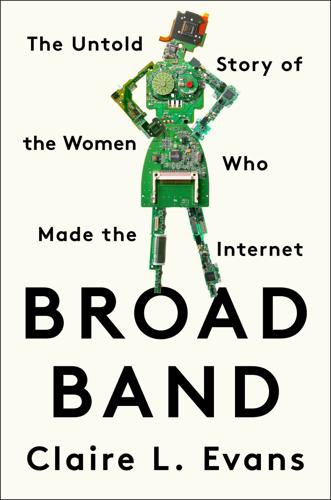
Broad Band: The Untold Story of the Women Who Made the Internet
by
Claire L. Evans
Published 6 Mar 2018
At Eckert-Mauchly, she’d been senior mathematician—“it sounded impressive enough to match the salary”—but at Remington Rand, seniority just meant more work. Beyond managing a team of programmers and overseeing custom software projects for each client, she served as clearinghouse for customer support. It was a constant battle. To say nothing of her side hustles: she was always furthering the art, working in what little spare time she had on improvements to programming technique. But it suited her to be busy. She’d had a rough patch in the years between Eckert-Mauchly’s insolvency and its acquisition by Remington Rand, her alcoholism creeping back—she was even arrested for drunk and disorderly conduct in November 1949.
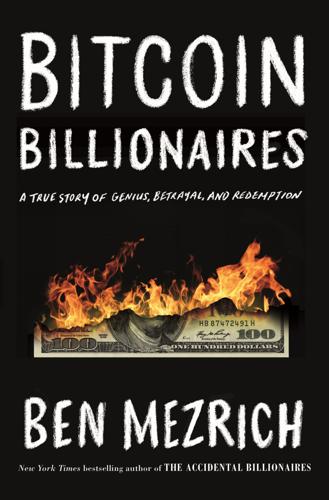
Bitcoin Billionaires: A True Story of Genius, Betrayal, and Redemption
by
Ben Mezrich
Published 20 May 2019
Tyler and Cameron had started to view Voorhees and Ira as people who were being paid like full-time employees but only working part-time—building their own projects on the side—one of which was a Bitcoin gambling site. The twins believed BitInstant required full-time dedicated employees, not people with one foot in, one foot out. That was how they approached everything, and Charlie could understand it: you didn’t make the Olympics by being a part-timer. Ver, on the other hand, thought Erik’s and Ira’s side hustles were none of the twins’ business—whatever they were building would only further the overall ecosystem and BitInstant along with it; but it was obvious, Ver’s disagreement with the twins went much deeper than business. As Bitcoin had grown, Ver had become more and more vocal about his beliefs—you either agreed with them, or you were the enemy.
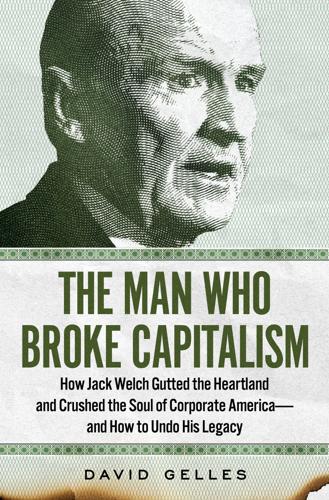
The Man Who Broke Capitalism: How Jack Welch Gutted the Heartland and Crushed the Soul of Corporate America—and How to Undo His Legacy
by
David Gelles
Published 30 May 2022
The rise of the gig economy has allowed new multibillion-dollar companies to be built on the backs of a shadow workforce. There are millions of drivers for Uber and Lyft, hundreds of thousands of deliverymen for Instacart and Seamless, and many thousands more offering themselves up for part-time work on sites like TaskRabbit and Upwork. Some of these workers treat the jobs as side hustles, occasional gigs that provide a bit of pocket cash. But for many, gig work is a full-time occupation, only without the security of a steady paycheck, decent benefits, or an employer to hold accountable. The gig economy, which began as a way to connect people who needed an odd job done here and there with locals looking to make a little extra cash, has given rise to an entirely new kind of labor force.
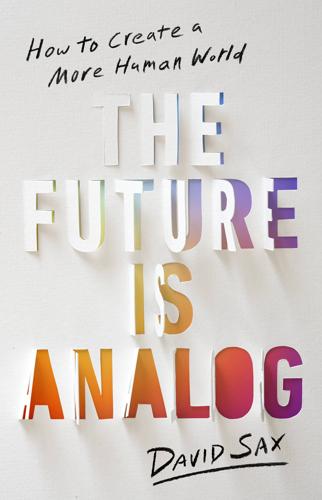
The Future Is Analog: How to Create a More Human World
by
David Sax
Published 15 Jan 2022
There are other big players in e-commerce, from foreign competitors like China’s Pinduoduo to national retailers like Walmart and Tesco; global brands such as GAP and Apple; marketplaces including eBay, Craigslist, and Mercado Libre; and individual stores and direct-to-consumer brands ranging from home-based side hustles to billion-dollar corporations, like Allbirds and Warby Parker. But none of them dominates the market and imagination around digital commerce in a way that comes remotely close to Jeff Bezos’s one-click powerhouse. True to Bezos’s vision of the digital future of commerce, Amazon is the ultimate everything store, a one-stop shop for anything you could possibly buy, from soup to nuts, to the pot to make that soup in and even to a tractor to harvest the nuts.

Code Dependent: Living in the Shadow of AI
by
Madhumita Murgia
Published 20 Mar 2024
Sama says it also funds four scholarships every year for workers who want to continue their studies, and provides some seed funding for those who want to set up their own businesses.6 The motto Janah constantly espoused was ‘give work, not aid’. In Sama’s Nairobi offices, employees wear ‘Give Work’ hoodies and T-shirts and everyone is encouraged to have a ‘side hustle’, a business idea that could, in turn, create new jobs. In a makeshift factory built in the middle of a field of rubble, a dozen women and girls sew footballs by hand – a business funded with a Sama grant. Employees have launched herbal beauty products, opened M-PESA or digital wallet shops, raised chickens for slaughter and founded girls’ football clubs in the settlements they come from.
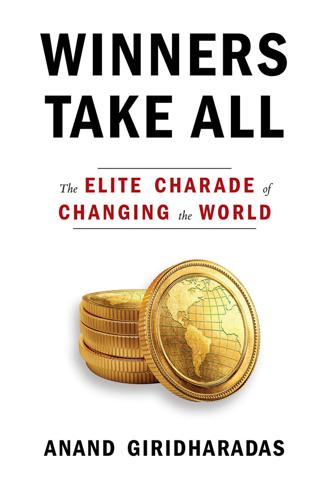
Winners Take All: The Elite Charade of Changing the World
by
Anand Giridharadas
Published 27 Aug 2018
It bothered me that the fellowship asked fellows to do virtuous side projects instead of doing their day jobs more honorably. The institute brought together people from powerful institutions like Facebook, the hedge fund Bridgewater Associates, and PepsiCo. Instead of asking them to make their firms less monopolistic, greedy, or harmful to children, it urged them to create side hustles to “change the world.” I began to feel like a casual participant in—and timid accomplice to, as well as a cowardly beneficiary of—a giant, sweet-lipped lie. Who exactly were we leaders of? What had given us the right to solve the world’s problems as we saw fit? What interests and blind spots were we bringing to that problem-solving, given the criteria by which we had been selected?

Golden Gates: Fighting for Housing in America
by
Conor Dougherty
Published 18 Feb 2020
” * * * — JESS LOVE HAD been renting apartments in the Bay Area since 1989, when, at nineteen, he used the savings from years of summer jobs to make a down payment on an $89,000 condo in Palo Alto. He rented to a group of tenants while he was off at college in Connecticut and used the next spate of summer jobs to refill his mortgage and repairs account. Love graduated and went to law school and spent two decades as a lawyer, but all along the way he kept building a real estate side hustle—trading up his properties, using his nights to do repairs, putting cash flow into new buildings. Finally, he was in his fifties and quit the law firm to become a full-time investor. Love liked real estate because he was good at it. He could do basic things like lay tile and sweat copper and install water heaters and repair cabinets.

Inheritance
by
Leo Hollis
Sir Richard was at that time an MP, as well as a major landowner in the north, and had insufficient time for the details of the London speculation. His younger brother Robert spent more time in London and appeared to be more hands-on with the development of the land, but it was clear that the successful running of this kind of scheme was no longer an elite side-hustle, but a fully professionalised operation. The management of land itself had turned into a sector that demanded a certain kind of expertise. Originally a carpenter, the estate surveyor Thomas Barlow had gained valuable experience across many of the schemes since the beginning of the new century.
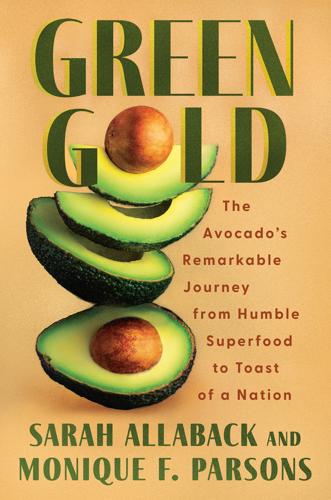
Green Gold
by
Sarah Allaback
Published 14 Mar 2025
Between 2011 and 2022, avocado exports grew 10 percent a year, five times the growth rate of fresh produce overall. The congress is also a venue to share updates on avocado production in various nations and connect with potential suppliers or customers. Dr. Srinivas Rao, a physician whose day job was working in a clinic in Hyderabad, India, was in New Zealand to network and find inspiration for his side hustle—jump-starting India’s avocado industry. Indian farmers planted 1 million avocado saplings in southern India between 2019 and 2021. Dr. Rao ordered budwood from Israel and California and set up an avocado-focused YouTube channel to train Indian farmers how to care for the trees on behalf of the company Deccan Exotics.
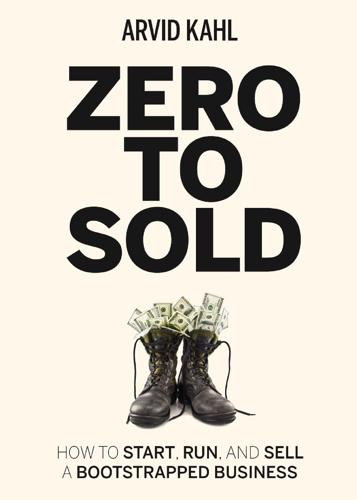
Zero to Sold: How to Start, Run, and Sell a Bootstrapped Business
by
Arvid Kahl
Published 24 Jun 2020
All of a sudden, we had a product that developed a strong network effect overnight. And that feature made the business grow beyond our wildest expectations. Every day, new teachers would sign up, and since we provided a service that solved their problems well, we had incredibly high retention and conversion rates. For many of our customers, teaching from home was a side hustle. Using our product enabled many of them to turn this into a full-time source of income. We priced our service to be affordable and easily justified. We even increased our prices by 50% a year into running the business, and it continued growing nevertheless. So we coasted along, adding new customers every day, building features and making the service more reliable, and integrating deeper and deeper into the web-based teaching software our customers were using.
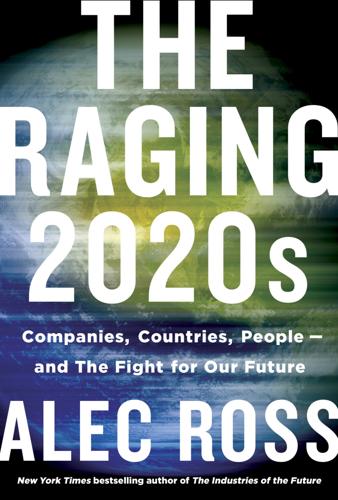
The Raging 2020s: Companies, Countries, People - and the Fight for Our Future
by
Alec Ross
Published 13 Sep 2021
When people talk about independent employment, they usually jump straight to the on-demand labor force enabled by companies like Uber, Lyft, Postmates, TaskRabbit, and Instacart. While this is the most visible form of gig work, less than 2 percent of the US labor force make their living through this “electronically mediated work,” though the number is higher if you count people who use the platforms as a side hustle. Still, this piece of the job market epitomizes the decentralized workforce. Anyone who has worked through one of these platforms knows it is a solitary affair. You have no coworkers. You set your own hours. You interact with the company only when something goes wrong with the app. For the most part, your marching orders—and your pay—are dictated by software.

Don't Be Evil: How Big Tech Betrayed Its Founding Principles--And All of US
by
Rana Foroohar
Published 5 Nov 2019
The depth and breadth of change being effected by the gig economy is unprecedented, and while the sheer number of workers that labor solely in the gig economy relative to the traditional economy isn’t yet as high as some academics once predicted it would be,12 the changes are still happening in nearly every industry, across pretty much every geography. What happens when everyone is, to a greater or lesser extent, a freelancer? What happens when everyone has to have some kind of a side hustle, because a single job isn’t secure enough anymore? That’s one of the big existential worries that Uber creates in many people, even while they, as customers, enjoy the huge convenience and cost savings it provides. Companies are increasingly boasting about how they want their employees to act as entrepreneurs—while neglecting to mention that what they really mean is they want employees to work hard, 24/7, without necessarily rewarding them like entrepreneurs, say with a piece of equity or a performance-based salary.
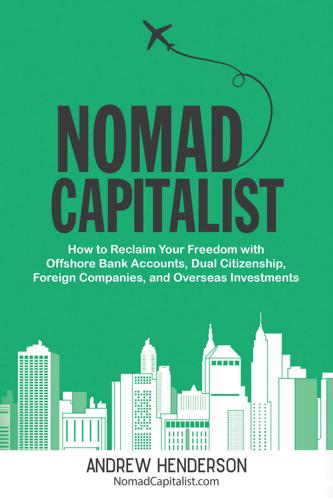
Nomad Capitalist: How to Reclaim Your Freedom With Offshore Bank Accounts, Dual Citizenship, Foreign Companies, and Overseas Investments
by
Andrew Henderson
Published 8 Apr 2018
If you want to be those things, it is probably not going to work out for you to find someone in the United States. It may not be the right fit for you. This was the case for David, an incredibly smart guy I met at a client mastermind a couple years ago. At the time, David spent his days running a family business and his nights making side hustle investments that few others would want to touch. By all outward appearances, David was a success. He was smart, accomplished, and had a good deal of money. What he did not have was a life partner. David came to meet with me and other clients in Colombia, ostensibly to see how I personally invested overseas and to tour real estate for investment.

The Smart Wife: Why Siri, Alexa, and Other Smart Home Devices Need a Feminist Reboot
by
Yolande Strengers
and
Jenny Kennedy
Published 14 Apr 2020
The company has further broadened into its own brand of electronic product lines—such as the Kindle e-book reader and the Echo speakers that “house” Alexa—which grow and support the company’s other markets for consumer goods and entertainment.9 Amazon branched into traditional retail in 2017 with its acquisition of Whole Foods Market, a high-end supermarket chain with over four hundred stores.10 The company also owns data centers and makes TV shows. It’s an impressive portfolio that has earned Amazon the name of the “Everything Store” (also the title of journalist Brad Stone’s 2013 book on the empire), and increasingly, the Everything Company.11 The chief of this megastore has several side hustles too. In 2000, Bezos founded Blue Origin, a human spaceflight company, which is intended to make the human species multiplanetary and move polluting industries off the planet.12 And he owns the Washington Post, one of the United States’ leading newspapers and a target of President Donald Trump’s “fake news” campaign.
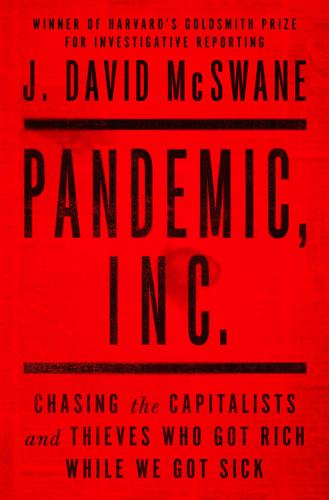
Pandemic, Inc.: Chasing the Capitalists and Thieves Who Got Rich While We Got Sick
by
J. David McSwane
Published 11 Apr 2022
With his deadline looming at 11:59 p.m. that night, Stewart said he still had faith that he could find 6 million masks and get them to the doorstep of the VA. The latest plan had come together just twelve hours before, when one of his contacts connected him with the former attorney general of Alabama, a guy named Troy King, a Republican lawyer who held a variety of LLCs and side hustles and whose name has often appeared adjacent to scandals in the newspaper. Further aiding his efforts was a mysterious woman to whom King had connected him, a Juanita Ramos, who allegedly had a relationship with someone on Vice President Mike Pence’s White House Coronavirus Task Force. This was the officially official one, not the Kushner Kids assembled by the president’s son-in-law.
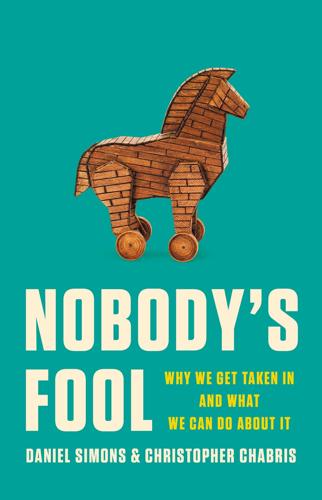
Nobody's Fool: Why We Get Taken in and What We Can Do About It
by
Daniel Simons
and
Christopher Chabris
Published 10 Jul 2023
He dropped the names of respected researchers we both knew, he had some interesting ideas, and he was unfailingly polite. Neither project got off the ground, however, and that turned out to be fortunate, as he had been involved in dozens of legal cases involving fraud or misrepresentation. By most indications, our “colleague” appears to have had a side hustle as a fraudster, pretending to have credentials he didn’t and bilking people out of a few thousand dollars here and there. If we relied less on “gut instincts” and checked credentials more thoroughly, we would less often become victims of fraud. Someone who is entirely trustworthy and credible will come across that way when you talk to them—but so will a con artist.

They All Came to Barneys: A Personal History of the World's Greatest Store
by
Gene Pressman
Published 2 Sep 2025
Fred’s emissary returned with jumpers and bell-bottom jeans, the first time jeans had been seen at Barneys. Boystown had been a little-kids place, but once cooler merchandise started coming in, it aged up. Even I used to shop down there, riding the train into the city and stopping on my way to or from Manny’s, the music shop on West Forty-Eighth, and chatting up Richard, a sales guy who had a side hustle gracing the covers of smutty romance novels. (A few years later, the rest of the world would come to know Richard Roundtree as the ass-kicking Shaft.) Boystown wasn’t fashion, exactly, not yet—fashion, in the way we understand it now, was still to come. * * * • • • In the winter of 1964, at least partly inspired by my fervent Beatlemania—probably because I wouldn’t shut up about it—Fred took the family to England for Christmas.
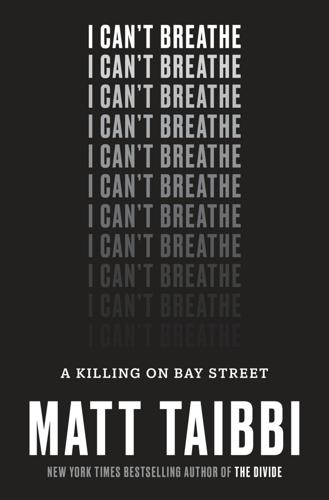
I Can't Breathe
by
Matt Taibbi
Published 23 Oct 2017
And a few other things.” Eric Garner walked away with his head down. Even crack dealing was starting to seem impossibly beyond his grasp. — It wasn’t long after that that Esaw made an offhand comment that would change her husband’s life. While Eric was away in jail the last time, she’d picked up her own little side hustle—one she didn’t realize was illegal. “I’m selling cigarettes,” she said. Eric immediately raised an eyebrow. “Selling cigarettes?” Eric said. “And how’s that working out?” “I make a lot of money in a day with these loosies,” she explained. He paused. “How much money?” — Drug dealing was the wrong fit for Garner.

The Costs of Connection: How Data Is Colonizing Human Life and Appropriating It for Capitalism
by
Nick Couldry
and
Ulises A. Mejias
Published 19 Aug 2019
Given all of this, considerable PR maneuvering is required to make such a depressing trend palatable. Here, what in chapter 1 we called the ideology of personalization can do useful work. In its own marketing materials, Airbnb promotes itself as “an economic lifeline for the middle class.”90 An ad for Uber features an African American driver speaking of the economic necessity to have a “side hustle,” a necessity Uber allows him to fulfill while also giving him time to “chill” whenever he wants and to spend more time with his family.91 The reality of Uber in particular, however, paints a less rosy picture. Alex Rosenblat and Luke Stark92 review Uber’s record of economic manipulation through surge pricing and sudden driver deactivation as well as the general opacity of its algorithmic processing from the point of view of its drivers (the company can make it seem as though there are more drivers available in a location than there actually are, simply to push worker wages down).
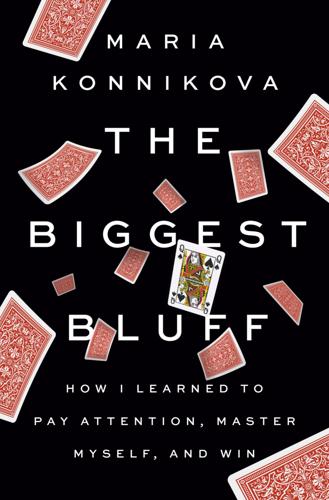
The Biggest Bluff: How I Learned to Pay Attention, Master Myself, and Win
by
Maria Konnikova
Published 22 Jun 2020
* * * — “BUT WHY COULDN’T YOU have maybe played chess instead?” My grandmother talking again. “Now that’s a respectable game.” I let out a final sigh. How I wish I could take her on a walk to Washington Square Park so she can see the actual chess players. Between the hustle and the side hustle, it’s some of the most intense betting I’ve ever witnessed. “I feel a connection to these people,” Erik tells me once, during a walk in Washington Square. “Because they’re games players. They hang out, play chess, sometimes backgammon. They get it.” But I’m out of energy. I don’t dive into my lecture about chess being a game of perfect information and life being a game of uncertainty.

Careless People: A Cautionary Tale of Power, Greed, and Lost Idealism
by
Sarah Wynn-Williams
Published 11 Mar 2025
The results of these efforts are posted to Mark’s Facebook page and then “optimized” to ensure his many millions of followers see them. Mark’s also started to optimize himself, eschewing the fatty fast foods for fresh cut fruit and putting time into working out every day. Officially he denies he’s running for president, but what else is this very time-consuming side hustle? Why the focus on battleground states? He hires the consultants who got Obama and Bush elected—David Plouffe and Ken Mehlman—to his foundation. He publishes a six-thousand-word manifesto full of global aspirations. His speeches take on a new tone, like what a kid thinks a president sounds like: Our greatest opportunities are now global—like spreading prosperity and freedom, promoting peace and understanding, lifting people out of poverty and accelerating science.
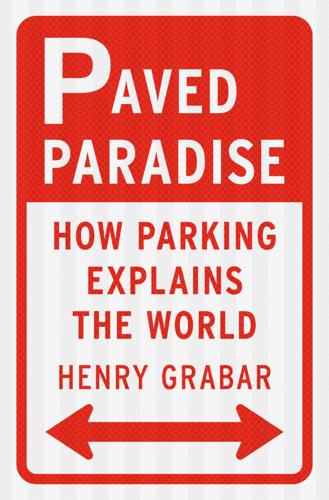
Paved Paradise: How Parking Explains the World
by
Henry Grabar
Published 8 May 2023
He was working on an urban forest management plan for Fullerton and rattled off a list of native, drought-ready plants. In addition to running for city council and the county Democratic committee, he drew his salary as an organizer at an environmental nonprofit and was also helping his dad restart his side hustle, a restaurant that burned down after an illegal marijuana greenhouse next door caught fire on New Year’s Eve. In short, José Trinidad Castañeda was possibly the busiest man in Orange County. He was up with the sun and still up long after it set. A good number of the issues that motivated him, though—transportation, housing policy, immigration, energy—were entangled in this seemingly obscure issue of legalizing garage apartments.
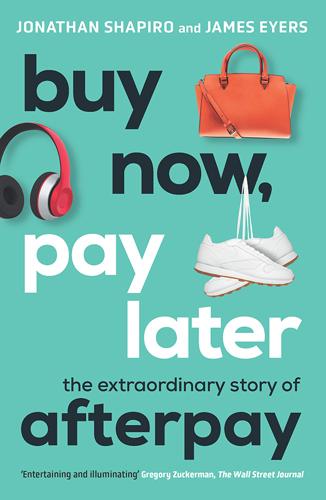
Buy Now, Pay Later: The Extraordinary Story of Afterpay
by
Jonathan Shapiro
and
James Eyers
Published 2 Aug 2021
Everything changed for Zoltan and his middle-class Jewish family. Hungary allied itself with the Axis powers. In 1942, Zoltan was taken from his home to serve in a labour camp in Lipinszkaja, on the western border of Poland.2 A year later, on 20 November 1943, Zoltan tried to escape; he was shot and killed. But Zoltan’s side hustle had saved his family. The gold and diamonds he kept in the apartment became the currency Lilly used to buy Christian identity papers from the cleaning lady, whose daughter was a similar age to Susie, the Kaufmans’ eight-year-old daughter. The gold was also used to pay off the hotelier of a mountain resort, a customer of Zoltan’s, when suspicious locals forced them to flee the city.
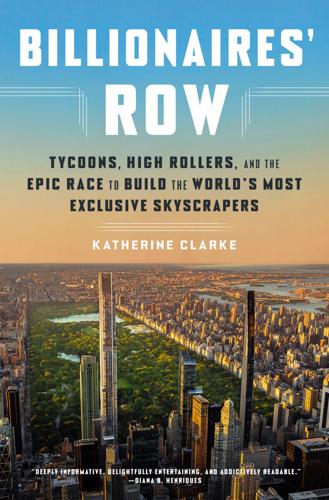
Billionaires' Row: Tycoons, High Rollers, and the Epic Race to Build the World's Most Exclusive Skyscrapers
by
Katherine Clarke
Published 13 Jun 2023
Barnum of New York Fashion Week,” as a New York Times writer once dubbed him, had rocketed to fame in the 2000s as a wunderkind in the city’s fashion scene, quickly becoming a favorite of celebrities like Natalie Portman, Rihanna, and Jennifer Lopez. In addition to running his own label and his TV gig, Posen, then in his thirties, would eventually take a number of lucrative side hustles over the years, including redesigning uniforms for Delta Air Lines. Posen had come armed with a variety of custom blazers for Roth to take a look at, but they weren’t for the Vornado boss. They were for the doormen at 220 Central Park South. Bringing in an internationally recognized designer for staff uniforms might have seemed like an unnecessary expense for most developers, but Roth was determined that his new project at 220 Central Park South would be the world’s premier residential address, besting those of Barnett, Macklowe, and Stern.

The Ones We've Been Waiting For: How a New Generation of Leaders Will Transform America
by
Charlotte Alter
Published 18 Feb 2020
They tended to prefer experiences over possessions. And a generation steeped in social networks became increasingly comfortable renting things instead of owning them: millennials rented rides (with Uber and Lyft), rented clothes (through Rent The Runway), and rented labor (through TaskRabbit). They also began to look to the gig economy for side hustles to supplement their meager incomes. By 2018, more than 40 percent of eighteen- to thirty-four-year-olds worked as freelancers. For almost half of the largest generation of workers, the traditional work structure that had defined twentieth-century professional life just wasn’t available anymore.
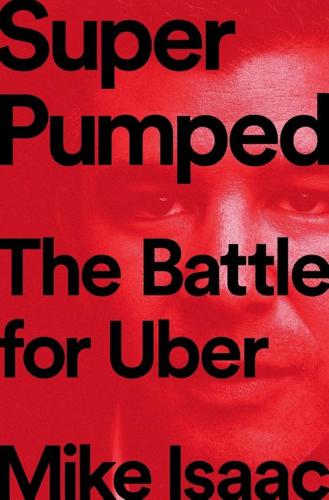
Super Pumped: The Battle for Uber
by
Mike Isaac
Published 2 Sep 2019
Unbeknownst to Google, the search giant was soon buying much of its tech for the street-mapping project from one of its own employees, Levandowski, who sold the gear via a middleman. Google eventually found out about Levandowski’s ruse. Instead of firing him, Google decided to buy Levandowski’s startup for $20 million. Side hustles like 510 Systems defined Levandowski. He liked money, but what he liked more was finding hacks and work-arounds. Levandowski may have labored at a giant corporation, but he was still a scrappy startup guy at heart. Building a business and selling it back to Google was validating; he had found a hole in the 20 percent time system, exploited it, and won.
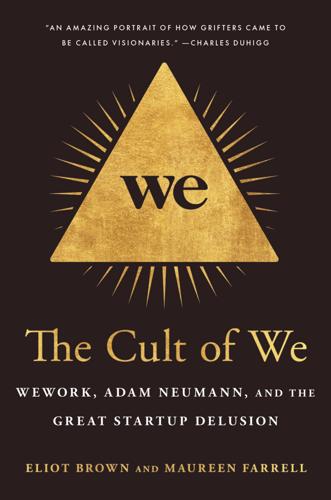
The Cult of We: WeWork, Adam Neumann, and the Great Startup Delusion
by
Eliot Brown
and
Maureen Farrell
Published 19 Jul 2021
Entrepreneurs with offhand questions morphed into new clients, and Safdie quickly became proficient in advising on venture capital investments, which he found more enjoyable than corporate mergers. He put up a sign next to the communal printer, saying he could provide legal services for small companies. What had started as an unintentional side hustle quickly became his main gig. Safdie sensed something was changing about the city; in the wake of the financial crisis, there was a new zeitgeist. It was all around him at WeWork, he thought, and he wanted to dive in deep. Later, he would move to two other WeWork buildings, before WeWork itself hired him as the company’s general counsel
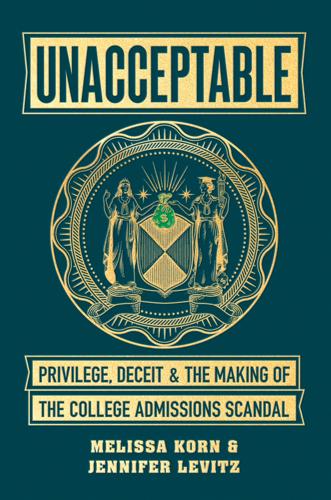
Unacceptable: Privilege, Deceit & the Making of the College Admissions Scandal
by
Melissa Korn
and
Jennifer Levitz
Published 20 Jul 2020
Isackson lived a few houses down from fellow Singer client Marci Palatella and her family, on a steep, curvy street in the hills above San Mateo. And Marjorie Klapper introduced Singer to the Sartorios, who lived a couple miles away at the end of a quiet cul-de-sac not far from Stanford. But too much scuttlebutt could torpedo Singer’s lucrative side hustle. For all his bluster and flexibility with facts, Singer ran a disciplined enterprise. He relied on parents to adhere to finely honed talking points to fend off high school counselors or college admissions officers who might question, for instance, why a student in the Bay Area was flying to L.A. to take the SAT, or why a nonathlete was suddenly being recruited for a university crew team.
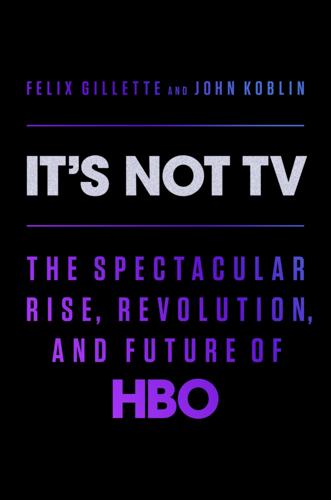
It's Not TV: The Spectacular Rise, Revolution, and Future of HBO
by
Felix Gillette
and
John Koblin
Published 1 Nov 2022
Liz Garbus, one of the most celebrated documentarians of the last twenty-five years, who has made films like The Execution of Wanda Jean and Bobby Fischer Against the World, credited Nevins with giving her a career. When she first met with Nevins in the late 1990s, she said it felt like “gaining access to the holy house of saints.” And if you worked with her, she explained, you were a documentarian—there were no side hustles necessary. “People talk about the Golden Age of documentaries now—with streaming and all the wonderful outlets and eyeballs out there—and it is,” she says. “But the Golden Age began if you were making a documentary with Sheila Nevins back at that time. You had financing, you had an audience, you had someone who creatively would support your mission.

Born in Flames
by
Bench Ansfield
Published 15 Aug 2025
He had been hired for this oxymoron of a job by Carmine Lanni, a landlord with a pattern of buying hard-up buildings, collecting maximal rent, and cutting services while keeping up with his insurance payments. Accordingly, Vega served more as rent collector than repairman, compensating for the shortage of billable hours with a set of side hustles. The felony on the young man’s record for military desertion only further circumscribed his career prospects, given the dismal employment landscape of the 1970s Bronx. These were far from boom years for repairmen in the borough, but in 1976, Vega’s boss presented him with a new opportunity in the form of a five-gallon container of gasoline.

Fancy Bear Goes Phishing: The Dark History of the Information Age, in Five Extraordinary Hacks
by
Scott J. Shapiro
Vladislav Klyushin, age forty-two, ran M13, a cybersecurity company catering to the top echelon of Russian society and government. M13’s website, for example, claims that it provides security for the Russian presidency. In 2020, Vladimir Putin bestowed the Medal of Freedom on Klyushin. The FBI, however, suspected that Klyushin had a side hustle making tens of millions of dollars on stock trading from hacked corporate-earnings information. In the spring of 2021, federal agents learned that Klyushin was traveling to Switzerland. On March 21, a private jet from Moscow touched down at Sion Airport in southwestern Switzerland. Shortly after leaving the plane, with a helicopter standing by to take him to the ski resort of Zermatt, Klyushin was detained by Swiss police and taken to a nearby prison.
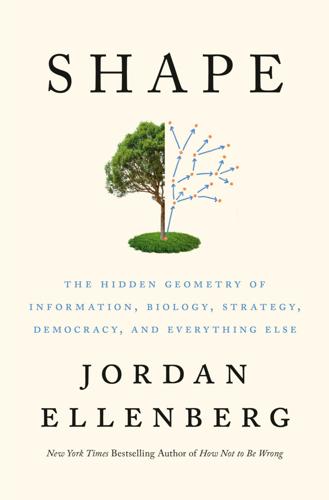
Shape: The Hidden Geometry of Information, Biology, Strategy, Democracy, and Everything Else
by
Jordan Ellenberg
Published 14 May 2021
The frugal dinner typically consisted of “one slice of bologna, a piece of Gruyere cheese, a fruit, a small container of honey and one or two cups of tea.” (Einstein, who had not yet gotten his position at the Swiss patent office, was scraping out a living tutoring physics at three francs an hour, and was contemplating a side hustle as a street violinist to keep himself fed.) The Academy read Spinoza, they read Hume, they read Dedekind’s What Are Numbers and What Should They Be?, and they read Poincaré’s Science and Hypothesis. But the very first book they studied was Pearson’s The Grammar of Science. And Einstein’s breakthrough, three years later, was very much in the spirit Pearson had imagined.
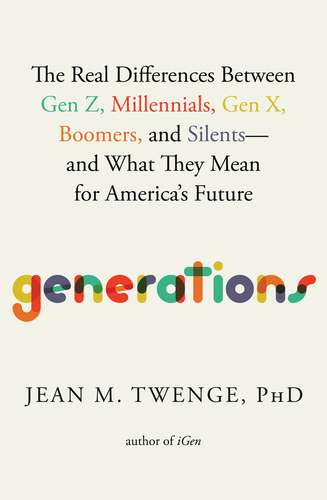
Generations: The Real Differences Between Gen Z, Millennials, Gen X, Boomers, and Silents—and What They Mean for America's Future
by
Jean M. Twenge
Published 25 Apr 2023
While the talk around Millennials had once centered on their impatient ambition, it soon focused on how they were getting the shaft from the economy. Endless articles and online discussions dissected whether Millennials would ever own homes, catch up with their parents, or be able to quit their side hustles. Even as the economy improved after 2012, Millennials’ dire economic situation was a constant focus, dominating the first nonfiction books written about the generation by its own members. As a large generation following a smaller one, Millennials are beginning to flex their political muscles, impatient for change many thought should have already come.

The Code: Silicon Valley and the Remaking of America
by
Margaret O'Mara
Published 8 Jul 2019
And it was hard to shake the icky feeling that many people had about sharing their lives with online strangers.18 The college students of the early 2000s had fewer qualms. They had grown up doing homework on a computer and sneaking late-night hours in the chaotic social world of Internet chat rooms. They file swapped on Napster until it got shut down; they added HTML flourishes to their MySpace pages. Still, Facebook started as a college kid’s side hustle, a vehicle for the silly, ephemeral musings and gossip of his fellow students, who presumably would move on to more serious things after graduation. In those early months the site’s server space was paid for by a wealthy roommate and, at one particularly cash-strapped point, by Zuckerberg’s parents.